Hyperloop
description: a proposed new mode of passenger and freight transportation using a sealed tube and reduced air pressure
63 results

The Long History of the Future: Why Tomorrow's Technology Still Isn't Here
by
Nicole Kobie
Published 3 Jul 2024
While his argument was sound, we had our call on the opening day of the Elizabeth Line (aka Crossrail) that now links the airport directly to Canary Wharf in 45 minutes. CHAPTER SEVEN Hyperloop I am standing in the rain in Edinburgh, waiting for a hyperloop. Don’t worry, this isn’t some sci-fi future-looking scene set 20 or 30 years in the future where I imagine what life will be like when these technologies eventually arrive. (I wouldn’t do that to you.) Instead, I am at European Hyperloop Week (EHW) 2023, straining to see through a crowd of hundreds of students wearing team-proclaiming sweatshirts and jackets – merch is a big deal here. In front of us is a short track, and hanging below it like a high-tech bat is a hyperloop pod built by students from Delft University.
…
While Musk may or may not be serious about the hyperloops, his PDF sparked an entire industry, including companies like Hardt, Zeleros, Hyperloop Transportation Technologies (which recently abandoned an attempt to go public) and Hyperloop One. The latter has shifted away from passengers to freight, which raises the question: what boxes need to be moved that quickly at such a high cost? Here’s a brief history of some of the hyperloops that have been announced with fanfare only to go on and quietly die or fade into nothingness. Hyperloop TT built a test track in Toulouse, France; though it was marketed as the world’s first and only full-scale test system, the track was just 320m (1,050ft).
…
And second, it would be ideal, to say the least, to be able to do so with a generally green form of transport rather than exacerbating the climate crisis by flying or driving slowly in intense traffic.16 Now, about the further point alluded to above. Hyperloop feasibility reports have a funny tendency to claim that no public funds are necessary, and that the entire project can be paid for using private funds. Naturally, that appeals to local governments – a world-first, sustainable, mass transport system, for free! – as well as to private investors hoping to rake in the big bucks. Indeed, analyst reports suggest the hyperloop market is worth well over a billion dollars already, though no hyperloop exists yet. Hyperloops are cheap when marketed to governments, but lucrative when seeking out investors – this is magical maths.
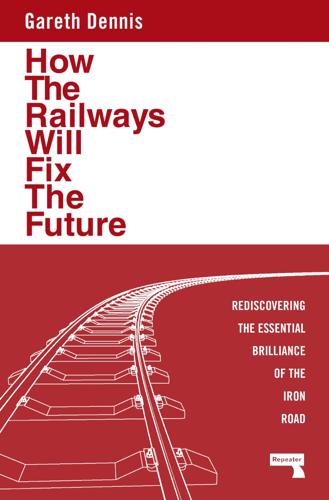
How the Railways Will Fix the Future: Rediscovering the Essential Brilliance of the Iron Road
by
Gareth Dennis
Published 12 Nov 2024
By the 1930s, another frontier was opened up by local business owners and the American mafia in the form of Las Vegas’s now (in)famous gambling industry, responding to a demand for entertainment on the part of the workforce building what is now the Hoover Dam. Roll forwards to the 2010s, and the Las Vegas authorities took a gamble on two Musk-adjacent ventures perceived as being on the cutting edge of a new frontier in transport systems: the Boring Company’s Loop and Hyperloop One (later Virgin Hyperloop, later Hyperloop One again). We’ve talked plenty about Loop, but let us now talk in a bit more detail about hyperloop. Hyperloop has been particularly effective in sapping public research funding, journalistic attention and administrative capacity. Accordingly, these tech bubbles end up being vehicles for the weirdest genre of guys to write empty books, dominate search engines and earn a speaker’s fee at Davos.
…
The company that now owns the concept continues to flail around in an attempt to convince people of its merits today. They suffer on in the shade of hyperloop, obscure enough that nobody in the tech journalist sphere thought to draw parallels. Even hyperloop’s bizarre name isn’t original, given “Hyperloop Inc.” existed as early as 1975, later owned by Lucas Industries, a British company famous for its workers’ attempts to take control of the company’s innovation strategy (and for giving Ozzy Osbourne his nickname2). Equipped with this context, we see that there’s nothing new about hyperloop, and this realisation strips away much of its appeal, or at least it ought to.
…
For comparison, high-speed lines around the world happily reach figures more like 10,000 pphpd or even 20,000 pphpd. Therefore, to achieve the same capacity as a single high-speed line would require eight hyperloop tubes in each direction. That’s sixteen tubes. Which leads us onto the corridor problem: hyperloop is beholden to the same rules of physics that any railway is, and so it can only maintain those high speeds with very shallow curves. For our example hyperloop system, the minimum curve radius is 40 km, which is essentially dead straight. Nowhere in the world, not even the Saudi desert, will tolerate a straight line of sixteen three-meter-diameter tubes tearing through the environment like something out of Thunderbirds.

The Future Is Faster Than You Think: How Converging Technologies Are Transforming Business, Industries, and Our Lives
by
Peter H. Diamandis
and
Steven Kotler
Published 28 Jan 2020
MIT professor of urban planning: Eran Ben-Joseph, ReThinking a Lot (MIT Press, 2012), pp. xi–xix. Hyperloop is the brainchild: For the original whitepaper: https://www.spacex.com/sites/spacex/files/hyperloop_alpha.pdf. Robert Goddard: Malcolm Browne, “New Funds Fuel Magnet Power for Trains,” New York Times, March 3, 1992. RAND corporation: Robert Salter, “The Very High Speed Transit,” Rand Corporation, 1972. See: https://www.rand.org/pubs/papers/P4874.html. In January 2013: For the full story of Hyperloop One development, see: https://hyperloop-one.com/our-story#partner-program. (Author note: Peter’s VC firm is an investor.)
…
Whatever the case, transportation ten years from today is going to look radically different—and this prediction doesn’t include everything that happened after Elon Musk lost his temper. Hyperloop On an empty swatch of desert outside of Las Vegas, perched atop a high-tech stretch of track, a sleek silver pod begins to quiver. Less than a second later, it’s not just moving, it’s a hundred-mile-per-hour blur. Ten seconds after, it’s zipping down the Virgin Hyperloop One Development Track at 240 mph. If these tracks continued—as they someday will—this high-speed train would take you from Los Angeles to San Francisco in the time it takes to watch a sitcom. Hyperloop is the brainchild of Elon Musk, just one in a series of transportation innovations from a man determined to leave his mark on the industry.
…
In January 2013, Musk and venture capitalist Shervin Pishevar were on a humanitarian mission to Cuba when they fell into a discussion about the Hyperloop. Pishevar saw possibilities, Musk saw overwhelm. He was irate enough to publish a white paper, but way too busy to start another company. So Pishevar, with Musk’s blessing, decided to do so himself. With Peter (one of your authors), former White House Deputy chief of staff for Obama Jim Messina, and tech entrepreneurs Joe Lonsdale and David Sacks as founding board members, Pishevar created Hyperloop One. A couple of years after that, the Virgin Group invested in the idea, Richard Branson was elected chairman, and Virgin Hyperloop One was born. The other required convergences were technological in nature.
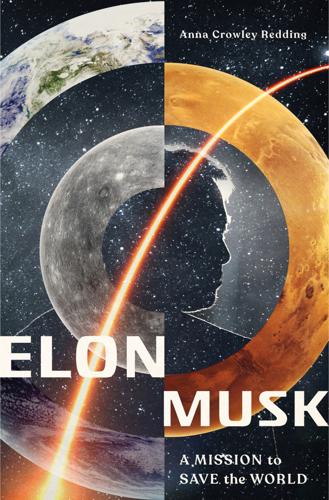
Elon Musk: A Mission to Save the World
by
Anna Crowley Redding
Published 1 Jul 2019
So instead of starting another company to chase that down, he published a public paper on the idea, spelling out what he thought was possible—with the hope that others in the tech community would pick up the idea and run with it. And they did. A start-up called Hyperloop One quickly set to work developing high-speed vacuum tunnel travel, eventually building a test site in Nevada. Another group of entrepreneurs and engineers started a company called Hyperloop Transportation Technologies. You can read Elon’s original paper here: www.spacex.com/sites/spacex/files/hyperloop_alpha.pdf And it wasn’t like Elon did not have enough to work on. SpaceX had already figured out how to launch rockets into orbit. Since 2012 it had made six deliveries to the International Space Station for NASA, using the larger Falcon 9 rocket and the Dragon cargo capsule.
…
He was at the airport again first thing Saturday morning to spend the day at Tesla … and then back to Los Angeles to spend Sunday at SpaceX. It was a lot, but in Elon’s world, there was no time to rest. In fact, that August, just a month after the wedding, Elon was announcing a new idea for getting around the planet, as he put it, a fifth mode of transportation: the hyperloop. Think bullet train, but crash proof, weatherproof, and much, much faster. He felt sure you could take a hyperloop from downtown Los Angeles to downtown San Francisco in thirty minutes. As he started talking about the idea in interviews, people would sometimes ask if he was serious. It seemed outlandish. Elon was serious. Only, he couldn’t possibly fit that in.
…
But the test tunnels will allow for tons of research on both the Loop and the Hyperloop. The Hawthorne test tunnel as of October 28, 2017. (© The Boring Company.) EARTHQUAKE! What would happen in the tunnel during an earthquake? Experts say one of the safest places to be during an earthquake is in a tunnel. Seismic motion becomes greater as it approaches the surface, and most tunnels are reinforced and built to withstand seismic activity. And as with Loop development, not only are Boring Company employees working on the Hyperloop project, but so are some of the top engineers from SpaceX. “We are taking world-class engineering talent, applying it to this problem, and seeing if we can make some headway,”163 Elon said.
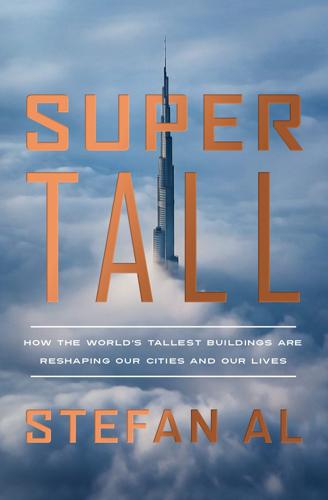
Supertall: How the World's Tallest Buildings Are Reshaping Our Cities and Our Lives
by
Stefan Al
Published 11 Apr 2022
Because, inside cities, people have yet to accept their urban skylines flocked with the noise of buzzing drones. It is easy to be seduced by the speed of hyperloops or the aerial sophistication of a flying drone. While hyperloops are faster, they probably won’t come close to the transport efficiency of the good old subway. Hyperloops can carry 3,360 passengers an hour.29 A single subway can carry more than ten times as many people. (While it might not carry as many people, a hyperloop’s higher speeds would prevent people from otherwise taking a more carbon-intensive ride.) If Marchetti’s constant continues to hold, building new developments around faster forms of mobility may further encroach on untouched land, destroying habitats and threatening ecosystems.
…
Other than a vacuum tube, such an elevator requires no pit, hoist way, machine room, or cable. It’s a bit like an old-time pneumatic tube mail system used to propel people instead of letters. Thus far, these elevators only travel up a few stories at best. With the development of the ultra-fast Hyperloop train, which travels through a low-pressure sealed tube, perhaps one day we will see a Hyperloop elevator. Maybe there is an end to this elevator madness after all. Several companies have decided their time and ingenuity is better spent on creating “green” elevators. Elevators are one of the most energy-efficient means of transportation, since you can fit in more people when you go vertically, instead of horizontally.
…
Today, a prime “location” may be even more of a moving target. Various companies are developing hyperloops, sealed tubes with magnetically levitated pods that could convey people in a highly energy-efficient way. Capsules carrying people can reach a top speed of 760 miles per hour, around the sonic barrier. This may lead to the explosive growth of metropolitan areas. You could commute from your office in downtown Los Angeles to Las Vegas, where prices are lower, and live in a bigger home. The race will be on for the first hyperloop-integrated skyscraper. Autonomous vehicles (AVs) could desensitize people to distance, possibly lengthening Marchetti’s “constant” of commuting time.
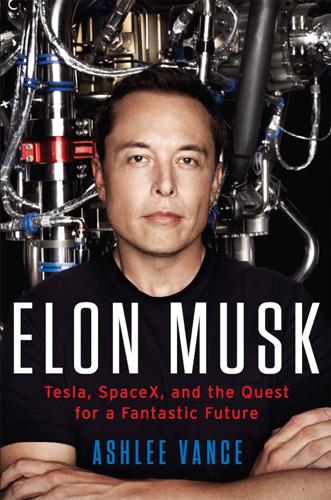
Elon Musk: Tesla, SpaceX, and the Quest for a Fantastic Future
by
Ashlee Vance
Published 18 May 2015
Musk said as much to me during a series of e-mails and phone calls leading up to the announcement. “Down the road, I might fund or advise on a Hyperloop project, but right now I can’t take my eye off the ball at either SpaceX or Tesla,” he wrote. Musk’s tune, however, started to change after he released the paper detailing the Hyperloop. Bloomberg Businessweek had the first story on it, and the magazine’s Web server began melting down as people stormed the website to read about the invention. Twitter went nuts as well. About an hour after Musk released the information, he held a conference call to talk about the Hyperloop, and somewhere in between our numerous earlier chats and that moment, he’d decided to build the thing, telling reporters that he would consider making at least a prototype to prove that the technology could work.
…
In a weird life-imitating-art moment, Musk really had become the closest thing the world had to Tony Stark, and he could not let his adoring public down. Shortly after the release of the Hyperloop plans, Shervin Pishevar, an investor and friend of Musk’s, brought the detailed specifications for the technology with him during a ninety-minute meeting with President Obama at the White House. “The president fell in love with the idea,” Pishevar said. The president’s staff studied the documents and arranged a one-on-one with Musk and Obama in April 2014. Since then, Pishevar, Kevin Brogan, and others, have formed a company called Hyperloop Technologies Inc. with the hopes of building the first leg of the Hyperloop between Los Angeles and Las Vegas. In theory, people would be able to hop between the two cities in about ten minutes.
…
California’s high-speed rail is meant to allow people to go from Los Angeles to San Francisco in about two and a half hours upon its completion in—wait for it—2029. It takes about an hour to fly between the cities today and five hours to drive, placing the train right in the zone of mediocrity, which particularly gnawed at Musk. He insisted the Hyperloop would cost about $6 billion to $10 billion, go faster than a plane, and let people drive their cars onto a pod and drive out into a new city. At the time, it seemed that Musk had dished out the Hyperloop proposal just to make the public and legislators rethink the high-speed train. He didn’t actually intend to build the thing. It was more that he wanted to show people that more creative ideas were out there for things that might actually solve problems and push the state forward.

Augmented: Life in the Smart Lane
by
Brett King
Published 5 May 2016
Three years earlier in July 2012, at a PandoDaily event in Santa Monica, California, Elon Musk mentioned to an assembled group that he was thinking about a “fifth mode of transport”, calling it the Hyperloop. On 12th August 2013, Tesla and SpaceX (both companies founded by Musk) released preliminary designs for a Hyperloop Transportation system on their blog sites. Musk called this open-source design, asking others with interest to contribute to the design. The initial proposed route for a US$6 billion passenger version of the Hyperloop ran from the Los Angeles region to the San Francisco Bay Area with an expected transit time of 35 minutes. The Hyperloop would thus traverse the 354-mile (570-km) route at an average speed of around 598 mph (962 km/h), with a top speed of 760 mph (1,220 km/h).
…
The Hyperloop would thus traverse the 354-mile (570-km) route at an average speed of around 598 mph (962 km/h), with a top speed of 760 mph (1,220 km/h). In January 2015, Musk announced that he was building a privately funded Hyperloop test track in Texas, about 5 miles (8 km) in length, for university and private teams to test and refine transport “pod” designs. Two additional start-ups, Hyperloop Technologies and Hyperloop Transportation Technologies, are both building their own two-mile and five-mile test tracks, respectively. The Hyperloop is a form of vactrain, or near-vacuum train. The biggest challenge traditionally in creating high-speed rail that is able to compete with air transportation systems has been the ability to circumvent friction and air resistance as speeds climb.
…
The system, which resembled earlier patents issued to Robert Goddard (the father of modern rocketry), was theoretically capable of allowing speeds of up to 5,000 miles (8,000 km) per hour. Meaning the transit time from New York to London would be less than an hour. The “Musk” Hyperloop resembles these vactrain proposals but would operate at approximately one millibar of pressure, qualifying as a “partially evacuated tunnel”. Because of the low-pressure, warm air proposed for the Hyperloop steel tubes, the pods projected to travel at around 760 mph (1,220 km/h) through these steel tubes would not actually break the sound barrier. Therefore, the pods would not need to be designed for passing through the transonic phase or coping with the shock of a sonic boom.

Upgrade
by
Blake Crouch
Published 6 Jul 2022
The Denver field office of the Gene Protection Agency was located in an unremarkable office park in Lakewood, and to call it a field office was generous. It was one floor of a building with light admin support, a holding cell, an interview room, a mol-bio lab, and an armory. The GPA didn’t have field offices in most major cities, but since Denver was the main hyperloop hub of the West, it made sense to have a dedicated base of operations here. We were a young but quickly growing agency, with five hundred employees compared to the FBI’s forty thousand. There were only fifty special agents like me and Nadine, and we were all based in the D.C. area, ready to parachute in to wherever our Intelligence Division suspected the existence of a dark gene lab.
…
I felt I was seeing through time as we sped across the transition zone between the Colorado Plateau and the Rio Grande rift. I saw the landscape in a way I never had before. The flat Mesozoic stratigraphy exposed at the base of the mountains, the younger Cenozoic sediments under the shoulders of the peaks. For a while, in the distance, we could see the white hyperloop tube stretching across the desert—the line between Denver and Albuquerque. We crossed rivers I’d heard about while watching Westerns with my father. To the east, sage- and juniper-covered hills transitioned into conifer forests into high peaks that gleamed brightly with snow above the timberline.
…
“. . . anti-ram vehicle barriers at the intersection of Highway 2 and Highway 24 on the southeast side of town, Highway 2 on the northwest side of town, Highway 246, Aitken Road, and Highway 42. All schools, businesses, and government facilities are closed. The Glasgow airport and train station are closed. All trains on the Northern Transcon will be detoured around the city. There will be no hyperloop regional service to Glasgow. A stay-at-home order remains in effect with no essential activity exemptions. A shipment of MREs just arrived from the Montana Air National Guard, which will be distributed to all impacted residents of Glasgow. If you need immediate medical attention, field hospitals are being set up at the intersection of First Avenue North and Fifth Street North.
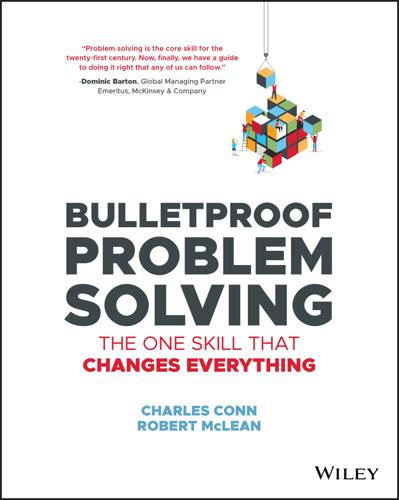
Bulletproof Problem Solving
by
Charles Conn
and
Robert McLean
Published 6 Mar 2019
EXHIBIT 6.10 Source: Jonathan Bays, Tony Goland, and Joe Newsum, “Using Prizes to Spur Innovation,” McKinsey Quarterly, July 2009. Elon Musk's Hyperloop project is an attempt to rapidly advance transportation technology. The Hyperloop is a pod transportation system currently under development, designed to transport people over long distances at astonishing, near supersonic speeds. Given its clear, well‐defined goal, and a large, diverse population of problem solvers, many of whom are students willing to accept the risk and hungry for the experience, the SpaceX Hyperloop competition is a great example to test the power of crowdsourcing. With an available testing track at its disposal, SpaceX ran its Hyperloop Pod Competition in January 2017.
…
See Human level machine intelligence Holmes, Sherlock, 123 Home Depot, 182 analysis, 60 asset productivity, 60 average sales per store, 62 emergence, 96–97 overheads/cost of goods sold, 60 Homelessness, analysis, 130 Horizon events, planning process, 203 framework, origins, 220 Hotspots, case study, 141 Human level machine intelligence (HLMI), 202 Hyperloop Pod Competition, 167 Hyperloop project (Musk), 166–167 I IBM, PC business loss, 200 Ideation, structure, 97 Incremental improvements, 99 Independent science review (ISRP), 230 Independent variable, usage, 156 Inductive arguments, 188e Inductive logic trees, 67–68 Inductive reasoning, 68, 188 Inductive thinking, 68–71 Information, purchase, 199 In Search of Excellence (Peters/Waterman), 107 Insurance, purchase, 201 Integrated assessments, requirement, 236 Internet penetration, impact (overestimation), 116 Interventions, impact, 150 Investment growth, 213e long‐term investments, 203, 213–219 Ishikawa diagrams, 129 ISRP.
…
With an available testing track at its disposal, SpaceX ran its Hyperloop Pod Competition in January 2017. By hosting a competition they were able to increase the quantity of prototypes being simultaneously explored. The jury is still out on Hyperloop as a viable concept, but the process is harnessing resources in a way not seen even a decade ago. Game Theory Thinking The analytic big guns we have discussed so far are based largely on statistical techniques. One of the other powerful tools in your toolbox for complex problems is game theory. Competitive situations in business and life mean that your actions influence and are influenced by another player, for these purposes called an adversary or opponent.
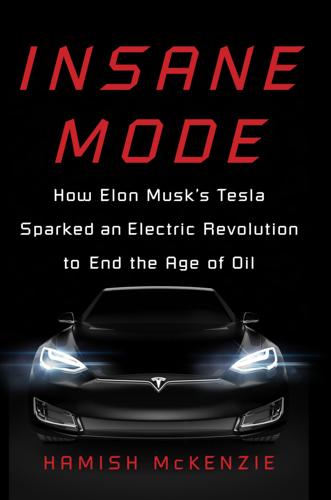
Insane Mode: How Elon Musk's Tesla Sparked an Electric Revolution to End the Age of Oil
by
Hamish McKenzie
Published 30 Sep 2017
In August 2013, his notoriety reached a new level when he announced plans for a “fifth mode of transport” that he said could take passengers from Los Angeles to San Francisco in half an hour. He wrote the blueprint for his so-called Hyperloop in an all-nighter and then published it on the Tesla and SpaceX corporate blogs. He didn’t plan to build the Hyperloop himself, but he hoped someone else would make it a reality. The ensuing news coverage bestowed on Musk the kind of attention usually reserved for Steve Jobs. Given the task of coming up with an article about the Hyperloop announcement for Pando, I wrote that Musk was more important to society than Jobs ever was. While Jobs did the world a great service by putting powerful Internet-connected computers in our pockets, Musk was operating on a different plane of purpose.
…
Under Governor Sandoval, Nevada had fashioned itself as America’s most business-friendly state. Sandoval was also establishing a reputation as a booster for high-tech manufacturing. As well as Faraday’s billion-dollar factory, the governor had landed Tesla’s Gigafactory in northern Nevada. Over a hill from the Faraday site, Hyperloop One was building a track to test its realization of Musk’s so-called “fifth mode of transport.” Bigelow Aerospace, maker of the Bigelow Expandable Activity Module—an inflatable space habitat better known by the acronym BEAM—had set up headquarters just down the road in North Las Vegas. Three days prior to Faraday’s factory groundbreaking, SpaceX’s Dragon spacecraft had delivered a BEAM to the International Space Station.
…
Musk knows that storytelling has power, and that the mere act of articulating goals matters a lot to their prospects of eventual achievement. In 2006, the Model S was just a line in a blog post—“the second model will be a sporty four door family car”—and not even the Roadster was available for sale. In 2013, the Hyperloop was just one man’s science project, sketched out through rough calculations in a white paper that he had written in an all-nighter. In the same month, the Gigafactory was just an uttered thought, when Musk wondered aloud about the prospect of building a “gargantuan factory of mind-boggling size.”
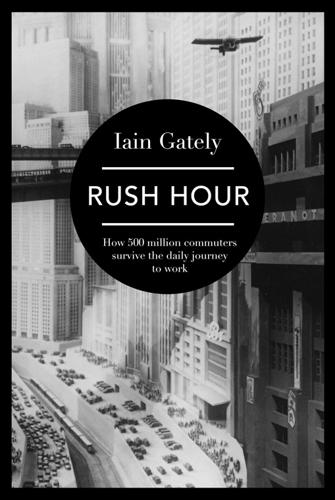
Rush Hour: How 500 Million Commuters Survive the Daily Journey to Work
by
Iain Gately
Published 6 Nov 2014
Similarly, the low-pressure tubes through which the Hyperloop might run have their precedents in ‘vactrains’, or vacuum tube trains, which have existed in theory and as models since 1909. Finally, not even its critics doubt that the Hyperloop’s electromagnetic propulsion system would work, and it has also been simulated by the best available transport modelling software, which has given it the thumbs up – in principle. Its pods may need skis on the roof as well as the floor but otherwise it looks viable. It’s possible, however, that even the Hyperloop isn’t radical enough. Although, in theory, it’s quicker and cheaper than CHSR, it will carry fewer passengers.
…
The Tesla Model S does 0 to 60 mph in 4.2 seconds, tops out at 130 mph, and has more boot room and better safety standards than a Volvo. Musk’s ambition is to retire to Mars. His counterproposal to the CHSR is the ‘Hyperloop’, a part pneumatic, part electromagnetic and part solar-powered system, which he claims could fly pods of commuters through elevated steel tubes between San Francisco and LA in about half an hour for a tenth of the price of building its rival. However, the Hyperloop’s costings have been shown to be out by a factor of several hundred per cent, and it’s been labelled by Alon Levy, a respected transportation commentator, as a ‘barf ride’ on account of the emetic g-forces it would generate when accelerating, decelerating, or travelling on inclines or round corners.
…
Although, in theory, it’s quicker and cheaper than CHSR, it will carry fewer passengers. Perhaps what is needed are stacks of Hyperloops that use support pylons to carry tubes upon tubes, like a fibre optic cable in cross section. Why not bundle up transport like telecommunications? Some of the tubes in the roll could be feeder hypoloops, and others provide roadways for driverless cars. There would be arrivals and departures at each station every second, and ramps on and off at every road intersection. Auto-commuting and rapid transit would be yin and yang – two parts of the same unity. Perhaps a golden age of commuting is on its way.
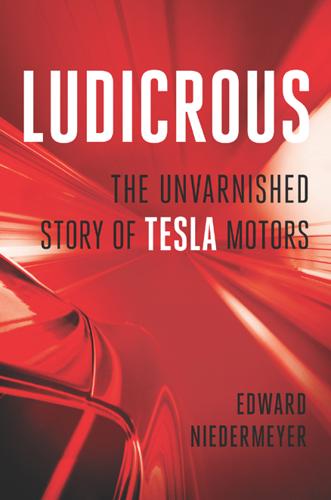
Ludicrous: The Unvarnished Story of Tesla Motors
by
Edward Niedermeyer
Published 14 Sep 2019
It’s a tough company to cover in part because of aggressive fan base that has developed into a cult of personality around Musk himself. Tesla has probably done more to improve the public vehicle electrification than any other company. Unfortunately, while the erratic and troubled CEO has many fascinating ideas from reusable rockets to hyperloops to ludicrously quick electric sedans and SUVs, his refusal to cede control to competent people that can execute has caused the company endless headaches. Ed has taken on the challenge of chronicling a company that prefers to only be discussed by its fans in an even-handed way that covers what went right and what failed.
…
Headlines lauded the company’s world-saving mission as well as its cars’ extraordinary features, such as the super quick zero-to-sixty acceleration option that Musk nicknamed “Ludicrous Mode.” And at a time when heroic public figures were an increasingly rare commodity, Musk’s centrality to Tesla’s capitalistic, technological, and environmental ambitions (to say nothing of his numerous other techno-utopian causes, including SpaceX, Hyperloop, The Boring Company, Neuralink . . . and, of course, the company whose success provided the funding for all of them, PayPal) made both him and his car company even more appealing. As Tesla’s brand solidified and its stock took off, Musk poured gas on the fire. Starting in 2013, he embarked on a hype campaign that continually ratcheted up Tesla’s ambitions and set him apart from anyone else in the public sphere.
…
In the following months, Tesla announced an asterisk-laden lease plan that could make a Model S cost just $500 per month, the goal of making its charging stations “zombie apocalypse–proof,” a battery-swap system that would automatically recharge a Model S in less time than it took to pump a tank of gas, an “Autopilot” system that would be able to drive itself in 90 percent of road conditions in just three years, and a claim that the Model S had earned the “best safety rating of any car ever tested” from the National Highway Traffic Safety Administration (prompting a statement from the regulator warning it not to overstate its ratings). Musk also released his plans for a futuristic “Hyperloop” transportation system, launching what would become a habit of showing off ambitious independent projects. Each of these announcements struggled to withstand close examination, ranging from mere exaggeration to quasi-delusional fantasy. Still, many outlets reported these developments unquestioningly, and Musk’s legend as a twenty-first-century Renaissance man blossomed.
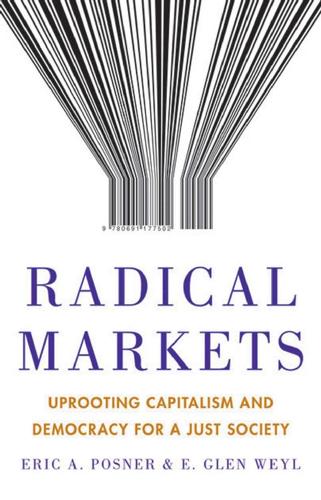
Radical Markets: Uprooting Capitalism and Democracy for a Just Society
by
Eric Posner
and
E. Weyl
Published 14 May 2018
When asked what the largest barrier is to implementing Hyperloop One, co-founder Josh Giegel replied, “We really need a right of way.” The interviewer responded, “Some constituencies, such as private landowners … could see holding this up for quite some time.”1 There is an obvious incentive for a landowner to hold out for a high price when such a valuable project is coming through. Suppose that each of 2,000 landowners along the route would normally be willing to accept $100,000 ($200 million in total) to cede right of way. Giegel believes that, net of other costs, Hyperloop can yield $500 million of operating profit.
…
Atkinson, The Mirrlees Review and the State of Public Economics, 50 Journal of Economic Literature 770 (2012). 30. Joan Robinson, The Economics of Imperfect Competition (Palgrave Macmillan, 1932). 31. William Cronon, Nature’s Metropolis: Chicago and the Great West (W. W. Norton, 1992). Chapter 1. Property Is Monopoly 1. Hyperloop Tests Magnetic Levitation At 192 mph, NPR Morning Edition, August 4, 2017, available at http://www.npr.org/2017/08/04/541538743/hyperloop-tests-magnetic-levitation-at-192-mph. 2. William J. Bernstein, A Splendid Exchange (Grove Press, 2008). 3. Robert C. Allen, Engels’ Pause: Technical Change, Capital Accumulation, and Inequality in the British Industrial Revolution, 46 Explorations in Economic History 418 (2009). 4.
…
Even if we don’t sell you on all our ideas, we hope this book will open your mind to a new way of imagining the economy and politics. This challenging moment, when long-held assumptions are being overturned, is ripe for radical rethinking. 1 Property Is Monopoly CREATING A COMPETITIVE MARKET IN USES THROUGH PARTIAL COMMON OWNERSHIP As a child fascinated by Elon Musk’s Hyperloop, Alejandro Espinosa often pictured himself in the cab of the first supersonic train, sitting side by side with the conductor. It never occurred to him that these trains would have no conductors. Yet the topographic and economic maps displayed in the holographs he was peering at clashed even more powerfully with his childish dreams.
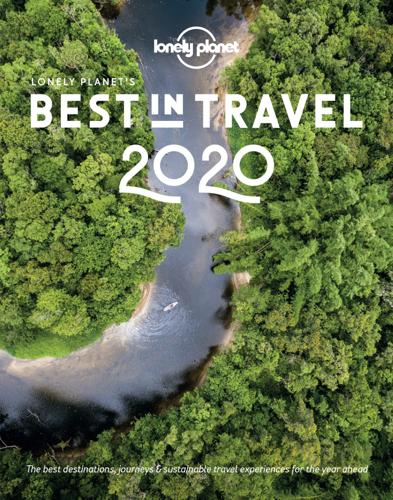
Lonely Planet's Best in Travel 2020
by
Lonely Planet
Published 21 Oct 2019
The tribute will be unveiled to the public in 2020. 7 HYPERLOOP, DUBAI, UAE The Hyperloop has been touted for a while as an ultra-speedy solution to crossing long distances at top speeds but so far has failed to materialise, despite hundreds of headlines. Now the theory looks to be finally put into practice and where better than the futuristic Dubai to test it out? While it won’t connect to Abu Dhabi as promised anytime soon, the first 10km track is the public’s first chance to test out the new mode of transport that might just revolutionise travel as we know it. The Hyperloop is set to be part of the Dubai World Expo in October 2020. 8 Great Southern Train Journey, Adelaide– Brisbane, Australia One of the latest luxury routes that prove rail travel will never die as long as people enjoy a day’s leisurely journey through beautiful landscapes and a night of being gently rocked to sleep in their own private carriage, the Great Southern will run three- and four-day routes between Adelaide and Brisbane, offering opportunities to stop at national parks, beaches and cities, with a luxurious cabin and gourmet food options to enjoy onboard.

Lonely Planet Lonely Planet's Best in Travel 2022
by
Lonely Planet
Published 26 Oct 2021
The tribute will be unveiled to the public in 2020. 7 HYPERLOOP, DUBAI, UAE The Hyperloop has been touted for a while as an ultra-speedy solution to crossing long distances at top speeds but so far has failed to materialise, despite hundreds of headlines. Now the theory looks to be finally put into practice and where better than the futuristic Dubai to test it out? While it won’t connect to Abu Dhabi as promised anytime soon, the first 10km track is the public’s first chance to test out the new mode of transport that might just revolutionise travel as we know it. The Hyperloop is set to be part of the Dubai World Expo in October 2020. 8 Great Southern Train Journey, Adelaide– Brisbane, Australia One of the latest luxury routes that prove rail travel will never die as long as people enjoy a day’s leisurely journey through beautiful landscapes and a night of being gently rocked to sleep in their own private carriage, the Great Southern will run three- and four-day routes between Adelaide and Brisbane, offering opportunities to stop at national parks, beaches and cities, with a luxurious cabin and gourmet food options to enjoy onboard.

Road to Nowhere: What Silicon Valley Gets Wrong About the Future of Transportation
by
Paris Marx
Published 4 Jul 2022
Tesla had experienced a rough year between its “production hell” caused, in part, by the failure of Musk’s plan to automate the intricate final assembly of its vehicles, and its acquisition of SolarCity, a solar panel company founded by Musk’s cousins whose terrible financials Musk hid from Tesla’s board to ensure the deal went through. Meanwhile, several years earlier he had also announced a visionary intercity transportation system called Hyperloop that he had no intention of pursuing and which he later admitted was unveiled with the goal of killing the high-speed rail line being built in California.6 Musk did not want the government to build a state-of-the-art train system; instead, he wanted to distract people with a technology that would not be feasible for at least several decades while keeping people reliant on personal vehicles.
…
Trees and other forms of greenery poked out of them, alongside landing pads that jutted out from the structure’s sides. The Skyport appeared to be a busy connection point: pedestrians were crowding the entrance and walking to it from outside the frame of the image, there were plenty of vehicles (and even a couple of minibuses) out front, a highway running underneath it with roads on every side, a Hyperloop tube emerging out of it, and even a light-rail line along the route of the highway. In every way, it seemed like a transport hub, but it was not clear why anyone would be using it. On one side of the building was a forest, and on the other there were parking lots and some low-density buildings. It was a veritable Skyport to nowhere.
…
In recent years, China has built the largest high-speed rail system in the world, while the European Union continues to expand its high-speed links and revive night trains to make longer journeys more feasible. Yet the train systems of North America remain stuck in the twentieth century, so it is no wonder that some people there think trains are a thing of the past. Solving this problem does not mean betting on transport fantasies such as Elon Musk’s Hyperloop vision, when high-speed rail is a technology that actually exists and has been undergoing constant improvement since the 1970s. Instead of getting distracted by science fiction, national governments should develop plans for public intercity transport systems that treat rail networks as the backbone, with bus systems and air travel to fill in the gaps.
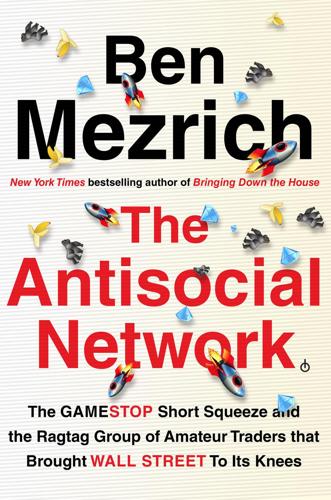
The Antisocial Network: The GameStop Short Squeeze and the Ragtag Group of Amateur Traders That Brought Wall Street to Its Knees
by
Ben Mezrich
Published 6 Sep 2021
A freshly bored tunnel fitted with electrodynamic suspension rails and linear induction motors, as well as a partially constructed Hyperloop capsule, complete with inlet fan and axial compressor. Elon Musk, CEO and chief techno-king of Tesla; CEO, CTO, and chief designer of SpaceX; dogecoin enthusiast; bitcoin proselytizer; sometime richest man in the world; and the former president of the Galactic Federation of Planets, was moving fast, his legs churning at what felt like a thousand RPMs, as he tore through the twelve-foot-high, mile-long Hyperloop test track. He was breathing hard, fighting for air in the reduced pressure environment of the underground tube, but the state-of-the-art neurolink imbedded in his cerebellum instantly compensated for the lack of oxygen, firing messages down his neural pathways to continuously modify his circulatory and respiratory needs.
…
Of course, as one of the most powerful and beloved entrepreneurs in the known universe, Elon could have left the job for one of his many Anti-AI Kill Teams; but he was the sort of CEO who liked to do things for himself. Famously, when his electric car company had been having production issues with its Model 3 sedan, he’d slept on the floor of the assembly plant, and had even worn the same clothes for five straight days. Similarly, if an AI was going to come alive in one of his Hyperloop test tunnels, he was going to deal with the issue himself. He braced the flamethrower against his shoulder, aimed the barrel at the self-aware drill, and counted milliseconds, letting the thing continue toward him, until it was within the weapon’s most efficient range. Staring up into the machine’s glowing control diodes, flashing red like the eyes of some satanic beast—he pressed his finger tight against the trigger.
…
Then he climbed out of the pod and crossed his bunker toward the kitchen area, tucked into a natural curve in the carved granite wall across from him. The stone floor felt warm against his bare feet as he went—one of the many benefits of having a secret underground bunker, which was heated by geothermal vents. He knew that such a place—another hundred feet below the test tunnel, connected by an even more secret, fully finished Hyperloop to his even, even more secret, fully completed, domed space port two miles off the coast—was very “James Bond villain” of him; but most of what people said or wrote about him was wrong or made up anyway. Besides, there was something deeply satisfying about playing into the hype surrounding his success.

How We'll Live on Mars (TED Books)
by
Stephen Petranek
Published 6 Jul 2015
He rolled his money into Space Exploration Technologies Corporation (SpaceX), a company he founded in 2002, then went on to cofound Tesla Motors, which is poised to revolutionize the automobile world. He is a devout environmentalist and proponent of solar energy—his Teslas can literally be driven on sunlight. In 2013, Musk proposed a unique high-speed transportation system in a vacuum tube called Hyperloop, which he put into the public domain. A Hyperloop tube running between Los Angeles and San Francisco could reduce travel time to thirty minutes. Musk formed SpaceX just when it seemed as if NASA was slipping into irrelevance. Like von Braun, he is a transplant, in this case from South Africa and Canada. Musk, like von Braun, is a perfectionist who is convinced of his vision and determined to achieve it.

The Technology Trap: Capital, Labor, and Power in the Age of Automation
by
Carl Benedikt Frey
Published 17 Jun 2019
In the future, new transportation technologies could also be used to connect places that are much farther apart. Hyperloop technology, which uses a sealed system of tubes to allow people to travel free of air resistance or friction, offers the potential of reaching distant locations at staggering speeds. Hyperloop Transportation Technologies, for example, recently signed agreements with the Illinois Department of Transportation to examine the feasibility of connecting Cleveland and Chicago through a number of different corridors.56 The commute currently takes around 5.5 hours by car or 7.1 hours by public transportation in one direction. The Hyperloop, if successful, is expected to bring this commute down to twenty-eight minutes.
…
On place and the likelihood of becoming an inventor, see Bell et al., 2017, “Who Becomes an Inventor in America?,” and 2018, “Lost Einsteins.” 55. C. T. Hsieh and E. Moretti, 2017, “How Local Housing Regulations Smother the U.S. Economy, New York Times, September 6. 56. D. Etherington, 2018, “Hyperloop Transportation Technologies Signs First Cross-State Deal in the U.S.,” TechCruch, https://techcrunch.com/2018/02/15/hyperloop-transportation-technologies-signs-first-cross-state-deal-in-the-u-s/?guccounter=1. 57. M. Busso, J. Gregory, and P. Kline, 2013, “Assessing the Incidence and Efficiency of a Prominent Place-Based Policy,” American Economic Review 103 (2): 897–947. 58.
…
See also Industrial Revolution Bronx, 182 Bronx-Whitestone Bridge, 167 Bronze Age, 35 Brown, Sherrod, 291 Brynjolfsson, Erik, 303, 326, 329, 339 bubonic plague (1348) (Black Death), 67, 75 Bureau of Labor Statistics (BLS), 191 Bush, George W., 357 Bythell, Duncan, 121 California Civil Code of 1872, 359 Čapek, Karel, 74 capitalism: perceived threat to, 210; beginnings of, 70; criticism of, 342; impact of clocks on evolution of, 47; rise of, 218; Jeffersonian ideal under, 212; normal state of, 210 capitalist achievement, 294 Capitoline Hill, 40 Captain Swing riots, 130, 285 caravel construction, 50–51 Cardwell, Donald, 47, 59, 97 Carlyle, Thomas, 117 Carnegie, Andrew, 208 Cartwright, Edmund, 105, 127 Case, Anne, 255–56 Cave, Edward, 102 Celestine III, Pope, 44 cement masonry, discovery of, 37 Chadwick, Edwin, 114–15 Charles I of England, King, 54–55, 82, 86 Chartism, 137 cheap labor, slower mechanization and, 75 Cherlin, Andrew, 276, 279 Chetty, Raj, 253, 361 child labor, 103, 123, 134; as opportunity cost to education, 214; robots of Industrial Revolution, 8–9 chimney aristocracy, 89 China: admission to World Trade Organization, 281, 286; ascent of, 289; delayed industrialization in, 88; trade war with, 331 Christensen, Clayton, 354 Chrysler Building, 182 civil rights: lagging, 20; legislation, 280 Civil War (American), 75 Civil War (English), 81 Clark, Gregory, 29, 48, 60 classical civilizations, 37 clientelism, 271 Clinton, Hillary, 285 clocks, 47 Coalbrookdale Iron Company, 108 cognitive divide, 238–43 Colbert, Jean-Baptiste, 84 collective action problem, 19–20 collective bargaining, 192 college-educated citizens: activities of, 352; detachment of, 256; among Great Divergence, 258, 358; hours per day worked, 338; perceived untrustworthiness of, 278; promotion of, 350; qualified as middle class, 239 Colt, Samuel, 149–50 Columbus, Christopher, 51, 67 Communist Manifesto, 7, 63, 70, 119 competition: among nation-states, 19, 57, 89; cascading, 289 computer-aided design software, 13 computer-controlled machines, jobs eliminated by, 228 computer publishing, 247 computers: age of, 228–38; analysts in, 235; automation anxiety concerning, 183; jobs created in, 16; ranks of the affluent in, 224; revolution, 249; those who thrived in, 16; trend beginning with, 258 connectivity, 362–63 consumer products: cheapening of, 294; new, Americans’ growing appetite for, 203 containerization, 171–72 Corbyn, Jeremy, 281 Corn Laws, 267 corporate giants, 208 corporate paternalism, 200 corporate profits, 132, 244 cotton cloth guild, 88 cotton industry, 100 cotton production, mechanization of, 7 Cowie, Jefferson, 200 craft guilds, 55–57, 87 Crafts, Nicholas, 107, 329 crime, joblessness and, 253 Crimean War, 150 Crompton, Samuel, 94, 102 Crouzet, François, 70 Crystal Palace Exhibition of 1851, 147, 149 cultural phenomenon, working class as, 278 culture of growth, 77 Dactyl, 313 Da Gama, Vasco, 51, 67 Dahl, Robert, 273, 352 Daimler, Gottlieb, 166 Darby, Abraham, 108 Dark Ages, light in, 41–51 data, as the new oil, 304 David, Paul, 153, 326 Davis, James J., 175 “deaths of despair,” 256 Deaton, Angus, 8, 255 Declaration of Rights of 1689 (Bill of Rights), 79 Decree Tractor Company, 215 Deep Blue, 303 deep learning, 304 Deep Mind, 301 Defense Advanced Research Projects Agency (DARPA), 307 Defoe, Daniel, 68–69, 71, 84 democracy: legitimacy of, undermining of, 274; liberal, components of, 267; middle class and, 265–69; rise of, 265 Descartes, René, 94 Detroit, Michigan, 151, 257, 359 Devine, Warren, Jr., 153 Diamond, Jared, 64 Dickens, Charles, 117 digital communication, 360 digital industries, clustering of, 260 Diocletian, Roman Emperor, 65 disappearance of jobs, 250–52 “disciplined self” identity, 279 Disraeli, Benjamin, 112, 268 Dittmar, Jeremiah, 48 Domesday Book of 1086, 44 domestic system of production, 61, 71; downfall of, 8 Douglas, Paul H., 178–79 Drebbel, Cornelis, 52 drones, 342 Drucker, Peter F., 227 drudgery, end of, 193–98 Dust Bowl (1930s), 193, 204 Dutch Revolt, 81 Earned Income Tax Credit (EITC), 357 earnings gap, 230 economic incentive, lack of, 40 economic inequality, 22, 274, 277 economic parasites, 79 economic segregation, 356 economies of scale, factories taking advantage of, 110 Eden, Frederick, 116, 344 Edison, Thomas, 2, 52, 148, 189 education and technology, race between, 216 Eilmer of Malmesbury, 78 Eisenhower, Dwight, 307 electricity, early days of, 151 electrification, rural, 157 Electronic Numerical Integrator and Calculator (ENIAC), 230 elevator: arrival of, 14; automatic, 182 Elevator Industry Association, 182 elevator operators, vanishing of, 181, 227 Elizabeth I of England, Queen, 10, 54, 105 Empire State Building, 182 enabling technologies, 13, 227, 228 Engels, Friedrich, 70, 112, 249, 364 Engels’ pause, 131–37, 219; ending of, 287; polarization and, 266; return of, 243–48, 331; time of, 337 English craft guilds, fading power of, 87 entrepreneurial risk, 77 Facebook, 285 factory system, 8, 97, 126; annus mirabilis of 1769, 97; artisans, 98; child labor, 103, 104; coke smelting, 109; control over factory workforce, 104; cotton industry, 100; domestic industry, output growth in, 98; earlier modes of production, 97–98; economies of scale, factories taking advantage of, 110; electrification, 190, 195; Industrial Revolution, 97, 100–101; international trade, rise of, 99; inventions, 102; iron, railroads, and steam, 105–11; mechanical clock as enabling technology for, 47; railroad, arrival of, 108; rise of machines, 99–105; silk industry, beginnings of, 99; social savings of steam engine, 107; steam engine, economic virtuosity of, 107; working class, 98 Fairchild Semiconductor, 359 Fair Labor Standards Act of 1938, 200 farming: disappearance of jobs, 197, 203; mechanization of, 324; revolution, 168–69 feudal oligarchies, replacement of, 58 feudal order: political participation in, 265; rise of, 41, 62 Field, Alexander, 163, 170 Finley, Moses, 36 First Opium War, 88 Fisher, Alva J., 27 Fisher, Irving, 210 Ford, Henry, 141, 148, 167, 195, 365 Ford assembly lines, 18, 365 Ford Motor Company, 148, 199, 240 France, industrial development in, 84 Francis I, Holy Roman Emperor, 85 French Revolution, 90 Friedman, Milton, 355 Friedman, Thomas, 257 Fukuyama, Francis, 141, 264–65, 273, 343 Furman, Jason, 322 Galileo, 39, 52, 54, 94 Galor, Oded, 133 Gans, Joshua, 308 Garden of Eden, 191 Gaskell, Elizabeth, 117 Gaskell, Peter, 117–119, 135, 229, 249 Gates, Bill, 10 Gates paradox, 10, 11, 21 General Electric, 155, 157, 215, 289 General Motors assembly lines, 18 geography of new jobs, 256–63 George Washington Bridge, 167 Giffen, Robert, 132–33 gig mill, 10, 76, 86, 128 Gilded Age, 208 Gille, Bertrand, 39–40 Gini coefficient, 209, 245 Gladstone, William Ewart, 133 Glaeser, Edward, 257, 261, 263 globalization: automation, and populism, 277–85; backlash against, 365; clamping down on, 290; costs of, 366; facilitator of, 282; first wave of, 171; losers to, 21, 26; vanishing jobs and, 11 Glorious Revolution of 1688–89, 79, 82–83, 86 Golden Gate, 167 golden postwar years, 239 Goldfarb, Avi, 308 Goldin, Claudia, 213, 349 Goldin, Ian, 357 Gompers, Samuel, 279 Goodyear Tire, 199 Google, 305 Google Translate, 304 Goolsbee, Austan, 340 Gordon, Robert, 198, 202, 220, 272, 342 government regulations, 49, 137 Great Depression, 13, 143, 170, 211, 272 Great Divergence, 24; absence of economic revolution, 95; beginnings of industrialization, 94; factory system, evolution of (see factory system); Industrial Revolution (see Industrial Revolution); per capita income growth, 94; rise of the machines, 93; textile industry, Industrial Revolution begun in, 95 Great Escape, 8 “great exception” in American political history, 200 Great Migration, 205 Great Recession, 244, 284, 339, 343 Green, William, 174 Greif, Avner, 88, 92, 344 growth, culture of, 77 Gutenberg, Johannes, 47 Habsburg Empire, 85 Hammer, Michael, 326 Hansen, Alvin, 179, 342 Hargreaves, James, 102–3 Harlem, 1 Harper, Kyle, 37 Hawking, Stephen, 36 hazardous jobs, end of, 195, 198 health conditions, during Industrial Revolution, 114–15 Heaton, Herbert, 37 Heckman, James, 351 Heilbroner, Robert, 335 Hellenism, technological creativity of, 39 Henderson, Rebecca, 305, 331 Hero of Alexandria, 39 high school graduates, employment opportunities for, 237 high school movement (1910–40), 214 Himmelfarb, Gertrude, 268 Hindenburg disaster, 110 hinterland, cheap labor and housing of, 261 history deniers, 23 Hitler, Adolf, 12 Hobbes, Thomas, 8, 46 Hobsbawm, Eric, 7 Hoover, Herbert, 211 horseless age, 164 horse technology, 43, 163 Hounshell, David, 148, 150 household revolution, 155–56 housing, zoning and, 361–62 housing bubble, 282 human capital accumulation, indicators of, 133–34 Humphries, Jane, 103, 121 Hurst, Erik, 338 Huskisson, William, 109–10 Hyperloop, 363 IBM, 231 Ibsen, Henrik, 17 Ice Age, 64, 76 identity politics, 278 “idiocy of rural life,” 62–64 income(s): disparities of, 61; reshuffling of, 287 income tax (Britain), introduction of, 133 incubators, nursery cities serving as, 261 industrial bourgeoisie, 267 industrial capitalism, rise of, 218 industrial centers, rise of, 115 industrial espionage, 6 industrialization, first episode of, 16 industrial organization, fundamental principle of, 229 Industrial Revolution, 68, 70; alcoholism, 123; in Britain, 329; Britain’s edge during, 19; British income tax, introduction of, 133; capital share of income, 131–32; child labor, 123, 134; children as robots of, 8–9; classic years of, 113; closing decades of, 138, 266; conditions of England question, 116–25; consumer revolution preceding, 68; cotton yarn manufacturing at dawn of, 100–101; divergence between output and wages, 131; domestic system, description of, 118; economic consequences of, 17; Engels’ pause, 131–37; engine of, 73; Englishmen left off worse by, 364; factories existing before, 94; gig mills, 128; golden age of industry, 118; government regulation, 137; hand-loom weaver, as tragic hero of Industrial Revolution, 121; health conditions, 114–15; human capital accumulation, indicators of, 133–34; labor income share captured, 114; industrial centers, rise of, 115; jobs created by, 16; key drivers of, 342; labor unions, bargaining power of, 137; Lancashire riots, 125, 127; leading figures of, 70; literacy rates, 134; Luddites, 125–31; machinery question, concerns over, 116; machinery riots, 127, 130; macroeconomic impact of, 94; material living conditions, decline of, 114, 120–21; mobility of workers, 122; obsolescence of worker skills, 124; origins of, 6, 80–91; political situation of workers, 129; reason for beginnings in Britain, 75; recipients of the gains of, 113; standard of living issue, 121; steam power, impact of on aggregate growth, 136; symbolic beginning of, 97; tax revenue, 133; technical change during closing decades, 139; technological progress, attitudes toward, 112; trajectory of inequality in Britain during, 217; true beginnings of, 100; unemployment, 113, 117, 125; victims of, 9; Victorian Age, machinery critics of, 119; wave of gadgets, 330; working poor, 113 inequality: age of, beginnings of, 62; Neolithic rise in, 63 inflation, 294 information technology, first revolution in, 47 inner-city ghettos, problems in, 258 innovation, 257; nurseries for, 261 innovation gap, 352 in-person service jobs, 235 inspiration without perspiration, 51–59 installment credit, 159, 167 institutional divergence (colonial Europe), 81 Intel, 359 interchangeable parts: concept of, 149; pioneering of, 74 International Labour Organization (ILO), 181 International Monetary Fund (IMF), 245 international trade, rise of, 67, 69, 99 Internet of things, 22 internet traffic: spread of, 328; worldwide, 303 inventions: agriculture, 54, 62; assembly line, 141, 365; barometer, 52, 59; bicycle, 165; camel saddle, 77; carding machine, 102; of classical times, 39; coke smelting, 108; electric starter, 166; iron, 36; light bulb, 2; mariner’s compass, 50; movable-type printing press, 47; nailed horseshoe, 43; navigable submarine, 52; personal computer (PC), 231; power loom, 105; spinning jenny, 102; steam digester, 55; steam engine, 52, 76; stirrup, 43; stocking-frame knitting machine, 54, 76; submarine, 73; telescope, 59; transistor, 231; typewriter, 161–62; washing machine, 27; water frame, 102; waterwheel, 38; wheel, 35 Iron Age, 35 iron laws of economics, 206 James I of England, King, 52 Japan, ascent of, 289 JD. com, 313 Jeffersonian individualism, 200 Jenkinson, Robert, 2nd Earl of Liverpool, 130, 289 Jerome, Harry, 13, 154, 198, 328 job demand, creation of, 262 Johnson, Lyndon, 184 Joyce, James, 16 Kaldor, Nicholas, 5, 205 Kasparov, Garry, 301 Katz, Lawrence, 135, 213, 245, 349 Kay-Shuttleworth, James, 117, 229 Kennedy, John F., 183 Kettering, Charles, 166 Keynes, John Maynard, 332, 334 King, Gregory, 68 knowledge work, 235, 259 Komlos, John, 115 Korea, ascent of, 289 Korean War, 180 Krugman, Paul, 12 Kuznets, Simon, 5, 206–7 Kuznets curve, 207, 212 labor, division of, 228 labor multiplier, 347 Labor Party, rise of, 268 labor productivity, gap between worker compensation and, 244 labor unions, 212; bargaining power of, 201, 277; legalization in Britain, 190 laissez-faire regime, 25, 267 lamplighters, 1–2 Lancashire riots of 1779, 90 landed aristocracy, 83 Landes, David, 9, 112, 118, 134, 343 Land-Grant College Act of 1862, 364 Latin Church, oppression of science by, 79 laundress, vanishing of, 27, 160 Lee, William, 10, 54 Lefebvre des Noëttes, Richard, 43 Leonardo da Vinci, 38, 51, 73 Leontief, Wassily, 20, 338, 343 Levy, Frank, 237, 302, 323 liberal democracy, components of, 267 Lindert, Peter, 61, 68, 114, 207, 211, 269, 271 literacy, demand for, 76 Liverpool-Manchester Railway, 109 lobbying, corporate spending on, 275 Locke, John, 83 Lombe, John, 52, 99–100 Lombe, Thomas, 6, 100 London Steam Carriage, 109 longshoremen, vanishing of, 172 Louis XIV of France, King, 84 Luddites, 9, 18, 125–31, 341; imprisoned, 20; new, 286–92; riots, 89, 92; uprisings, 265 machinery question, 116, 174–88; adjustment problems, 177; automation, employment effects of, 180; computers, automation anxiety concerning, 183; elevator operators, 181–82; musicians, displaced, 177–78 machinery riots, 9, 265, 289; absence of (America), 190; Britain, 90 Maddison, Angus, 66 Magellan, Ferdinand, 51, 67 majority-rule voting system, 270 Malthus, Thomas Robert, 4, 64, 73, 316, 345 Malthusian logic, 345 Malthusian trap, escape of, 65 Manhattan Project, 74 Manpower Training and Development Act (MDTA), 353 Mantoux, Paul, 97, 101, 126 Manufacture des Gobelins, 84 Manufacture Royale de Glaces de Miroirs, 84 manufacturing: blue-collar jobs, disappearance of, 251, 254; American system of manufacturing, pioneers of, 149; factory electrification, 151–55; interchangeable parts, concept of, 149 Margo, Robert, 135, 145 markets, integration of, 86 Marx, Karl, 26, 47, 98, 239, 364 Massey, Douglas, 256 Massive Open Online Courses (MOOCs), 354 mass production, 147–73; American system of manufacturing, pioneers of, 149; containerization, 171–72; direct drive, 153; factory electrification, 151–55; horseless age, 164; household revolution, 156; industries, 18; installment credit, 159, 167; interchangeable parts, concept of, 149; Model T, 167; unit drive, 153 Maurice of Nassau, Prince of Orange, 59 Maybach, Wilhelm, 166 McAfee, Andrew, 303, 339 McCloskey, Deirdre, 70 McCormick, Cyrus, 149, 168 McLean, Malcom, 171 mechanics, Galileo’s theory of, 53 mechanization, age of automation vs. age of, 227 median voter theories, 270 medieval Christianity, 78 mercantilism, flawed doctrine of, 83 Mesopotamia, 35 metals, discovery and exploitation of, 35 Michigan Antitrust Reform Act of 1985, 359 Microsoft, 306 Middle Ages: agricultural technology in, 42; feudal order of, 57; onset of, 41; technical advances of, 50; traditional crafts of, 68 middle class, descent of, 223–25; artificial intelligence, 228; automation, adverse consequences of, 240; cognitive divide, 238–43; computer-controlled machines, jobs eliminated by, 228; computers, 228–38; corporate profits, 244; division of labor between human and machine, 228; earnings gap, 230; Engels’ pause, return of, 243–48; golden postwar years, 239; Great Recession, 244; high school graduates, employment opportunities for, 237; industrial organization, fundamental principle of, 229; in-person service jobs, 235; knowledge workers, 235; labor productivity, gap between worker compensation and, 244; mechanization, age of automation vs. age of, 227; multipurpose robots, 242; rule-based logic, 228; Second Industrial Revolution, elimination of jobs created for machine operators during, 228; “symbolic analysts,” 235 middle class, triumph of, 218–222; agriculture, mechanization of, 189; automotive industry, 202; baby boom, 221; blue-collar Americans, unprecedented wages of, 220; child labor, as opportunity cost to education, 214; collective bargaining, 192; corporate giants, 208; corporate paternalism, 200; education and technology, race between, 216; end of drudgery, 193–98; Engels’ pause, 219; factory electrification, 190, 195; farming jobs, decline of, 197, 203; Great Depression, 211; “great exception” in American political history, 200; Great Migration, 205; hazardous jobs, end of, 195, 198; high school movement (1910–40), 214; Jeffersonian individualism, 200; Kuznets curve, 207, 212; labor unions, 201, 212; leveling of American wages, 211; machinery riots, absence of, 190; middle class, emergence of, 192, 292; national minimum wage, introduction of, 211; new consumer goods, Americans’ growing appetite for, 203; New Deal, 200, 212; public schooling, 214; Second Industrial Revolution, 209, 217; skill-biased technological change, 213; tractor use, expansion of, 196; urban-rural wage gap, 209; Wall Street, depression suffered by, 211; welfare capitalism, 198, 200; welfare state, rise of, 221; white-collar employment, 197, 218 Middle East, 77 Milanovic, Branko, 217, 245 mining, 194, 197 Minoan civilization, 34 mobile robotics, 342 mobility, demands for, 348 mobility vouchers, 360 Model T, 167 modern medicine, rise of, 22 Mokyr, Joel, 19, 52, 76–77, 79 Moore’s Law, 107, 301, 304 Moravec’s paradox, 236 Moretti, Enrico, 258, 262–63, 360 Morgan, J.
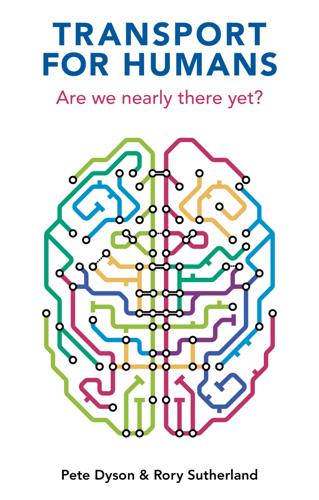
Transport for Humans: Are We Nearly There Yet?
by
Pete Dyson
and
Rory Sutherland
Published 15 Jan 2021
It grabs headlines, splits opinion and seems exceptional to the British public, but it shares common ground with similar rail projects all over the world. It’s certainly not the first massive and controversial transport megaproject, and there’s a good chance it won’t be the last. In this way it is similar to time-saving inventions of the past (like Concorde) and those transformational technologies of the future (like the hyperloop, electric planes and driverless cars). 1. Design for end-to-end journeys The key benefits of long-distance rail over air travel and motorway driving are simplicity and smoothness. Once boarded, the train has a royal flush of advantages, with its seats and connectivity, the ability to walk about the carriage, and large scenic windows.
…
Now Existing digital technologies, innovation from outside-in E-commerce/videoconferencing/digital connectivity/digital platforms Journey planners/shared mobility/car clubs/demand-responsive transport Near Existing physical technologies accelerated by transport Micromobility (e-scooters, e-bikes and more) Electric cars Far Emerging technologies pioneered by transport Driverless cars/autonomous vehicles/drones Hydrogen-powered freight, trains and shipping Hyperloop trains/electric planes The ‘hype curve’ shows how new technologies start more slowly than insiders expect. Skype started in 2003 and Ocado in 2010, and while the benefits of both were clear from the outset, they saw modest usage until an exogenous shock – the Covid-19 pandemic – acted as a trigger for an explosion in home working and online shopping.
…
As we have shown, societal change most commonly follows an S-curve, i.e. change appears to happen slowly at first, then faster and faster, before plateauing off. Unfortunately, when sat at the base of the ‘S’, many optimists and myopics are vulnerable to the lure of extrapolating that midway exponential growth, drawing an inexorable and fanciful line upwards. Physical transport technologies such as driverless cars and Hyperloop trains attract huge amounts of funding when the economy is strong – almost $750 billion in 2018 and 201926 – but the revolution always seems to lie just around the corner. To paraphrase the twentieth-century economist Paul Samuelson, technologists correctly predicted nine of the last five transport revolutions.
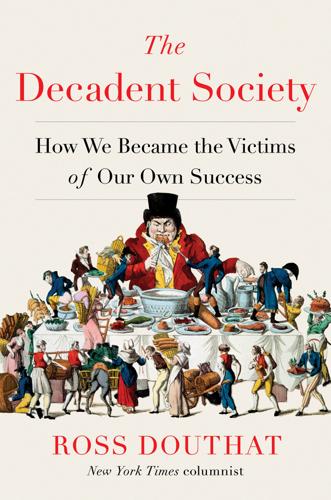
The Decadent Society: How We Became the Victims of Our Own Success
by
Ross Douthat
Published 25 Feb 2020
There have been sublime technological objets, like the iPhone, whose original release was the closest my own generation possesses to a shared experience of techno-wonder. There have certainly been men and women who get famous selling the promise of the sublime—Elon Musk’s hyperloops being the most famous examples. And there have been moments of a nostalgic sublime—such as the final flight of the space shuttle Discovery, carried into history on a special Boeing 747 airliner, which had people craning their necks to watch as the retired spacecraft was ferried from Florida to the Smithsonian in Washington, DC. But the hyperloop is a blueprint, Las Vegas is a simulacrum, virtual reality is not—and as the science-fiction writer Neal Stephenson wrote after watching Discovery pass overhead, the nostalgic sublime of its final flight mostly accentuated the possibilities we’ve given up: “My lifespan encompasses the era when the United States of America was capable of launching human beings into space.
…
“dangerous” categorization of, 141–42 see also pink police state Civil Rights Act (1964), 77 Civil War, US, likelihood of second, 133–34 class war, 173 climate change, 35, 202, 219, 221 catastrophic, 192, 195–97, 200 as consequence of dynamism, 179–80 disproportionate effects in global south of, 174–75, 202 mass migration and, 196–97 sustainable decadence and, 173–75 Clinton, Bill, 71, 77 Closing of the American Mind, The (Bloom), 97 Coates, Ta-Nehisi, 97 Cold War, 181 colleges and universities: civil liberties and, 141–43 conflicting missions of, 142 cultural repetition in, 97–98 sex bureaucracy in, 142–43 Communism, fall of, 103, 112, 114, 162–63 Communist Manifesto, The (Marx and Engels), 219 Communist Party, Chinese, 139 communitarianism, religious, 216 communities, virtuous, 215–17 Confessions of a Born-Again Pagan (Kronman), 224 Congo, Civil War in, 199 Congress, US: abdication of policy making by, 75–76, 194 polarization of, 194 conservatives, conservatism, 206 apocalyptic thinking among, 98 birthrate and, 53 in congressional abdication of policy making, 75–76 cultural repetition and, 97–98 decadence of, 203 nostalgia of, 100 sclerosis as viewed by, 72–76 see also right Constitution, US, as not designed to cope with ideological polarization, 78 convergence, of Western and non-Western decadence, 165–69, 173 Coppola, Francis Ford, 95 Corbyn, Jeremy, 114 corporations, dearth of investment and innovation by, 26 Cortés, Hernán, 189, 190 cosmopolitanism, 206, 217, 218 counterculture, 2 Counter-Reformation, 222, 230 Cowen, Tyler, 12, 28, 33–34, 35, 45, 46 Crash of 1929, 194 credentialism, 35 crime rates, decrease in, 150 Crouchback, Guy (char.), 183 Crowley, Aleister, 231 Cuarón, Alfonso, 65–66 Culture of Narcissism, The (Lasch), 96 culture, repetition in, see repetition culture wars, 97–98 cummings, e. e., vii Days of Rage protests, 129 deBoer, Freddie, 145–46, 149 debt, national, 70 ratio of GDP to, 192, 193 debt, overhang of, 34 decadence, 10 aesthetic definition of, 6–7 author’s definition of, 8–10, 239 Barzun on, 8, 12, 69, 91, 96, 100, 113, 135, 172, 184 birthrate and, see birthrates, decline in convergence of, in West and non-Western world, 165–69, 173 economic, see stagnation, economic as ending in dystopia, 184–85 end of, see decadence, deaths of EU as case study in, 82–86 hope for renewal as possible under, 179 institutions and, 69 Islamic world and, 159 moral definition of, 7 and need for a Messiah, 237–39 opposition to, political and social risks of, 178–80, 182–83 policy limits imposed by, 87 political sclerosis as, see sclerosis, political possible inevitability of, 234–36, 240 repetition as, see repetition seductiveness of, 217 use of term, 6–7 decadence, deaths of, 115, 187–240 catastrophe as, see catastrophe divine intervention scenario for, 239–40 neo-medieval scenario for, 200–203 renaissance scenario for, see renaissance space travel scenario for, 236, 239–40 decadence, sustainable, 115, 117–85, 240 arguments in favor of, 177–85 authoritarian systems in, 137–54; see also pink police state benefits of, 180–82 climate change and, 173–75 comfortable numbness in, 119–36 as contradiction in terms, 179 dystopian elements of, 184–85 management of, 181–83 meritocracy in, 169–73 politics and, 129–36 pornography and, 119–22 prescription drugs and, 126–28 virtual entertainments and, 122–26, 128–29 Deep Throat (film), 119 Defense Department, US, UFO videos released by, 233–34 deficit, investment constrained by, 34 deficit spending, 192–93 DeLong, Brad, 192 Democracy in Europe Movement 2025 (DiEM25), 219 democratic norms, 68–69, 78, 163 Democrats, Democratic Party: 1960s–70s reform in, 77 Senate controlled by, 67 demographic change, weight of, 34, 56–58 religious renewal and, 222–23 stagnation and, 57 see also aging populations Deneen, Patrick, 215–17 Deng Xiaoping, 140 depression, among teenagers, 123 deregulation, 24 despair, declining birthrate and, 61–62 developed world: aging populations of, 34, 56–58, 60, 66 limits to growth in, 32–36 shrinking family size in, 59–60 developing world, emergence of decadence in, 165–69, 173 Didion, Joan, 110, 131 Discovery (space shuttle), 37 disease, spread of, 190–91 Disneyland, 37 dissent, marginalization of, 151–52 divine intervention, as scenario for end of decadence, 239–40 divorce rate, 51, 55 Dobson, James, 119, 120 “Dope Show, The” (music video), 140–41 dot-com bubble, 24 Douthat family, 59–60 Dreamland (Quinones), 127 drone warfare, 150 drugs, prescription: antidepressant, 126 increased use of, 126 opioid epidemic and, 126–27 social upheaval repressed by, 126–27 Dune (Herbert), 229 Dunham, Lena, 95 Durant, Will, 189, 202 Dworkin, Andrea, 120 Dylan, Bob, 110 dynamism, 25, 46, 58, 110 dangers of, 179–80 immigration and, 62, 64 nostalgia for, 206 Dyson, Freeman, 6 dystopias, 3, 47–50, 65–66, 94, 95, 122, 128, 144, 155–56, 179 economic catastrophe, 191–95, 200 economic stagnation, see stagnation, economic economy, declining birthrate and, 56–58 economy, US, deceleration of, 24 education: constraints on, 34–35 productivity and, 34–35 Ehrenreich, Barbara, 224 Ehrlich, Paul, 43 Eisenhower-era America, 2 elections, US: of 2008, 67 of 2016, 162, 182 Emanuel, Rahm, 67 Encyclopædia Britannica, 107 End of History and the Last Man, The (Fukuyama), 112–13 energy revolution, 210 Engels, Friedrich, 219 Enlightenment Now (Pinker), 165 entertainment, politics as, 153–54 entrepreneurship, declining rate of, 25–26 environment: constraints imposed by, 35 see also climate change Erdog˘an, Recep Tayyip, 163 Eurafrica, 198–200, 206–10, 218, 228–29 Christianity revitalized by, 207–8 euro, 82 destructive consequences of, 83–85 Europe, 197 aging population of, 198 economic stagnation in, 25 far right in, 85, 155, 162 left’s scenario for renaissance of, 219 mass migration to, 197–99, 200 nationalism in, 85, 172–73, 218 pink police state in, 143–44 populist resurgence in, 85 US economy vs., 166 US governmental system vs., 82, 83 European Union, 172–73, 217, 219 birthrate in, 50 centralization of authority in, 83, 84–85 financial crisis in, 84, 192 Muslim refugees in, 160 possible collapse of, 194 public distrust of government in, 83 sclerosis in, 82–86 unrealistic assumptions of, 82–83 Euro Tragedy: A Drama in Nine Acts (Mody), 84 evangelical Protestantism, 53, 101, 119, 222 Everlasting Man, The (Chesterton), 238–39 exhaustion, cultural and intellectual, decadence as, 9 expansionism, 3–4 environmental and social cost of, 5–6 exploration: abandonment of, 5–6 ideology of, 3–4, 231–32 Fake News, 153 families, shrinking of, 58–62 far left, 172, 194 far right, 134, 193, 194, 227 in Europe, 85, 155, 162 fascism, 112, 160, 194 feminism, 47, 51, 53, 54, 90, 97, 108, 120, 121, 156, 227 fiction, literary, declining sales of, 91 Fight Club (film), 113, 185 filibuster, 78 finance industry, see Wall Street financial crisis of 2008, 11, 69, 80, 84, 137, 192 Finland: decline of sexual relations in, 55 declining birthrate in, 52–53 Fire Next Time, The (Baldwin), 97 Flynn effect, 35 Flynt, Larry, 120 food production, climate change and, 195–96 Ford, John, 110 Foreign Policy, 133 Fox News, 77 France, 32 immigrants in, 64 pronatalist policies of, 52 protest movements in, 171, 172 Francis, Pope, 103 Freedom Time: Negritude, Decolonization, and the Future of the World (Wilder), 208 free-market policies, 25 free trade, 24, 28, 29 French Revolution, 206 From Dawn to Decadence (Barzun), 8 frontier: closing of, 5, 135 New, 181 space as, 2, 6, 231–32; see also Apollo moon program Turner on importance of, 3–4 Fukuyama, Francis, 12, 83, 112–13, 115, 135, 159 Fyre Festival, 17–18, 21 Game of Thrones (TV show), 95, 96 Garland, Merrick, 78 gay rights, revolution in, 99 gender, wage gap and, 99 genetic engineering, 11, 43, 211, 229, 230 Germany, 192 immigrants in, 64, 85 Germany, Nazi, 225 Germany, Weimar, 129, 131 Gersen, Jacob, 142 Gharbi, Musa al-, 97 Gibson, Mel, 189–90, 202 gig economy, decline of traditional freelancing in, 27 gilets-jaunes, 171 Gingrich, Newt, 77 globalism, 218 global South: climate change and, 174–75, 202 mass migration from, 208 global warming, see climate change God and Man at Yale (Buckley), 97 Goebbels, Joseph, 132 Gordon, Robert, 12, 33, 34, 35, 40–41, 46 government: informal norms of, 78 policy failures of, 71 public distrust of, 75 public expectation of action by, 74–75 uncontrolled sprawl of, 72, 76 Government’s End (Rauch), 72 Graeber, David, 12, 38, 40, 41 Gramsci, Antonio, vii Grantland, 93–94 Great Awakening, 103, 222, 228 Great Britain: Brexit in, see Brexit US technological mastery vs., 165 Great Depression, 30, 109 Great Filter, 234–36, 240 Great Recession, 11, 23, 27, 69, 114, 124, 193, 194 falling birthrate in, 51 Great Society, 77 Great Stagnation, The (Cowen), 33–34, 45 Greece, 84, 85 in 2008 financial crisis, 192 Green New Deal, 221 Green Revolution, 43, 196 growth, limits on, 32–36, 46 Guardian (Australia), 220 Guinea, 206 Habits of the Heart (Bellah et al.), 97 Handmaid’s Tale, The (Atwood), 47–50, 65 Handmaid’s Tale, The (TV show), 95 Hanson, Robin, 234 Harris, Mark, 93–94 Harris, Sam, 224 Hazony, Yoram, 218, 219 health care reform: interest groups and, 73 Obama and, 68, 69–70, 73–74, 76 Heavens and the Earth, The (McDougall), 2 Herbert, Frank, 229 Heterodox Academy, 97 Hinduism, 225 history: end of, 112–15, 135, 163, 177 return of, 129, 183, 195 viewed as morality play, 157 hive mind, 106–7 Holmes, Elizabeth, 18–19, 22 hookup culture, 121 horoscopes, 225 Houellebecq, Michel, 155–57, 159, 160–61, 172, 226, 227 House of Representatives, US, 68 “How the Wealth Was Won” (2019 paper), 26 Hubbard, L. Ron, 231 Huebner, Jonathan, 45 Hungary, 85–86, 164 Huntington, Samuel, 159 Hurrican Maria, 71 Hustler, 119–20 Huxley, Aldous, 127–28, 130, 184–85 Huysmans, Joris-Karl, 156 hyperloops, 37 Identity: The Demand for Dignity and the Politics of Resentment (Fukuyama), 115 identity politics, 115 ideological debates, repetition in, 100–101 “illiberal democracy,” 163–64 immanent divine, 224 immigrants, 64 birthrate of, 50 immigration: economic and social insecurities exacerbated by, 63–64 see also mass migration immigration reform, 70 impeachment hearings, 71 Inca Empire, 189–90 India, economic growth in, 167 inequality, economic, 31–32 declining birthrate and, 57–58 infant mortality rates, 50–51 innovation, 30 decline of, 45, 46 declining birthrate and, 57–58 repetition vs., 9 Instagram, 18 institutions: decadence and, 8–10, 69 technological acceleration and, 213–15 intellectuals, intellectual realm, repetition in, 96–101, 180 interest groups, health care and, 73–74 Intergovernmental Panel on Climate Change, 174 Internet, 40 anonymity on, 144–45 Chinese censoring of, 139 and decline in risky social behavior, 122–23 and declining rates of sexual violence, 121–22 extremist elements of, 194 hive mind and, 106–7 homogenization of, 104–5, 106 illusion of progress fed by, 11 journalism and, 105–6 mediocrity and, 107 NSA and, 146, 147 pornography and, 120–21 productivity and, 41 repetition in, 104–7 right to privacy and, 145, 146–47 as surveillance state, 144–47 unfulfilled promise of, 104–5 Internet economy, 17, 22 consolidation in, 27 Ip, Greg, 167 IPCC, 195 iPhone, 37, 40, 107 IQ scores, Flynn effect and, 35 Iran, Islamic Republic of, 160, 163 Iran nuclear deal, 71 Iraq War, 69, 70, 80, 150 Ireland, 52, 84 Islam, Islamic world, 201, 223 falling birthrates in, 161 modernity and, 227 as path to renaissance, 226–28 Islamic State (ISIS), 70, 113, 148, 152, 160 Islamists, Islamism, 113, 114, 155, 207 as alternative to liberal order, 159–62 Israel: birthrate in, 50, 54, 217 as model for nationalist renaissance, 217–18 Italy, 84, 85 iTunes, 105 Ivanov, Vyacheslav, 7 James, P.
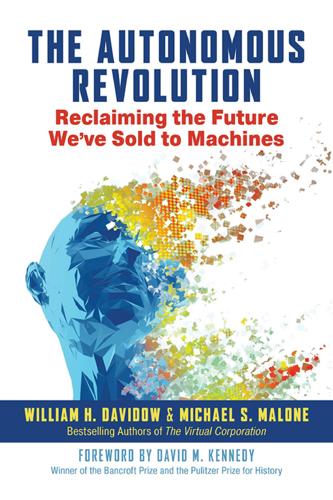
The Autonomous Revolution: Reclaiming the Future We’ve Sold to Machines
by
William Davidow
and
Michael Malone
Published 18 Feb 2020
Erik Brynjolfsson and Andrew McAfee, The Second Machine Age (New York: W. W. Norton, 2014), 221. 45. Bill Snyder, “You’ll Never Get Google Fiber—But You Don’t Need It Anyway,” InfoWorld, December 6, 2012, https://www.infoworld.com/article/2616265/you-ll-never-get-google-fiber----but-you-don-t-need-it-anyway.html. 46. “Hyperloop,” Wikipedia, https://en.wikipedia.org/wiki/Hyperloop. 47. “The Rise of Suburbs,” Lumen, https://courses.lumenlearning.com/ushistory2ay/chapter/the-rise-of-suburbs-2/. 48. Brent Nyitray, “Construction Spending Falls as a Percentage of GDP,” Market Realist, August, 2, 2019, https://marketrealist.com/2016/08/construction-spending-falls-percentage-gdp/. 49.
…
The projects identified by the ASCE represent only a fraction of what has to be done to create a robust twenty-first-century infrastructure. Providing 100 million households with FTTH (fiber to the home) would require an investment of between a quarter and a half-trillion dollars—and that’s just the tip of the iceberg.45 Massive investments in public transportation are needed—things like high-speed rail, and possibly even hyperloops that would allow trains to travel at the speed of sound.46 Substantial portions of our cities and suburbs will need to be retrofitted or rebuilt from scratch. In the 1960s and 1970s, when the 41,000-mile Interstate Highway System was being completed and the suburban population was burgeoning (it almost doubled between 1950 and 1970), construction spending ran 10 to 11 percent of GDP.47 It falls in the 5 to 6 percent range today,48 so it could easily double.

Stealing Fire: How Silicon Valley, the Navy SEALs, and Maverick Scientists Are Revolutionizing the Way We Live and Work
by
Steven Kotler
and
Jamie Wheal
Published 21 Feb 2017
I think as technologists we should have some safe places where we can try out things and figure out the effect on society, the effect on people, without having to deploy it to the whole world.” In 2007, Elon Musk did just that, debuting an early prototype10 of his Tesla electric roadster at the event. He also came up with the ideas11 for both his renewable energy company SolarCity and his superfast transit system Hyperloop while on the playa. And true to the Burning Man principle of gifting, he gave both away. SolarCity went to his cousins; Hyperloop, published online in a white paper, was an offering to the world at large (that has since inspired two different companies). Zappos founder and CEO Tony Hsieh12 told Playboy that the experience of collective awareness, what he calls “the hive switch,” is the reason he attends.
…
See also specific hallucinogen Hamelin (Germany) pipers, 65–66, 67, 69 Hanfstaeng, Ernst, 69 Harper’s Magazine: Sandia “super mule” article in, 184 Harris, Sam, 57–58 Harvard Business Review: Tolbert comments in, 93 Harvard Medical School: lifestyle change study at, 42 Harvard University: happiness course at, 175 Harvey, Larry, 160 hashish, 34 head trauma, 60–61 heart rate: monitoring of, 104, 147, 151, 197 Heaven’s Gate suicides, 67 hedonic calendaring, 213–16 Heifetz, Ron, 114 Hell Week, Navy SEALs, 13, 19 Hells Angels, 189 Hemingway, Ernest, 216 heroin, 29, 62 Hessel, Andrew, 133–34 Hill, Napoleon, 80 Hirshberg, Peter, 166–67, 168 Hitler, Adolf, 69 hocus-pocus, 73, 74 Hofmann, Albert, 3 Holiday, Ryan, 205–6 Holy Ghost: Mormon belief in, 53, 54 hope: importance of, 222 Horgan, John, 58 horseback riding, 60, 61 How We Got to Now (Steve Johnson), 141 Howl (Ginsberg), 77 Hsieh, Tony, 161–62, 163, 170, 210 Hua, Vanessa, 159 human condition, 216–18 human potential movement, 76, 77–81, 191 Hunt, Graham, 135, 136 Hurricane Katrina, 164–65 Hurricane Sandy, 165 Huxley, Aldous, 3, 199 HyaSynth Bio, 133 hydrocodone, 133 Hyperloop, 161 Hyperspace Lexicon, 130–31, 204 hypnosis, 108 ibogaine, 116, 122 iFly (Metni company), 138, 150 imaging technology, 101, 107–8, 109, 124, 125, 194. See also brain imaging IMAX, 30 immersive experience design and training, 148–53 immersive/visionary art, 142–45, 149, 150, 157, 198 In Over Our Heads (Kegan), 39 individualism, 68 information technology, 185–87, 199, 216 innovation.
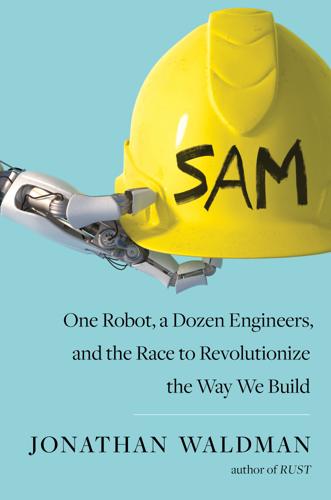
SAM: One Robot, a Dozen Engineers, and the Race to Revolutionize the Way We Build
by
Jonathan Waldman
Published 7 Jan 2020
In Scott’s fantasies, Google—which had an appetite for innovation and robotics—would see SAM run, know right away that it was looking at the future, and extend its mighty pedicured tentacles, propelling the start-up to the stratosphere. Zak, meanwhile, flew halfway around the world to the United Arab Emirates, to represent Construction Robotics at an intriguing new program called the Dubai Future Accelerators. Flashy hotshot upstarts including Uber and Hyperloop One had been accepted—and just being mentioned alongside them made it especially tantalizing to Zak. Initially, Scott had been lukewarm about the idea; it didn’t help that his wife did not want him huddled away in the Middle East for two months. Nate also had been opposed. He’d called the program a waste of time.
…
By the end of the third week, the office had cleared out. A third of the companies admitted to the program had bailed, and the rest had stopped participating in show-and-tell. Zak considered bailing but did not because he detected glimmers of hope. When the U.S. ambassador stopped by, the program head directed him to just two companies: Hyperloop One and Construction Robotics. To Zak, the head of the program kept saying that SAM was great, wonderful, the quintessence of the program. Privately, the head said that the crown prince’s response was encouraging and that CR was on track to get funding. More specifically, he said that CR was on the shortlist for establishing a memorandum of understanding—though it was never clear what exactly that understanding would entail.
…
The idea was no more compelling or novel than opening a new sushi restaurant in Sarasota. The whole thing seemed to be a sham. More evidence: Those promised MOUs, he’d heard, led nowhere. They were fluff. All they said was: We agree to work with you for the next sixty days. And the big money—the royal pocket change—was never there. Hyperloop One, as Zak once believed, didn’t actually get $50 million from the accelerator. It got the money independently, before the program ever started, but the press releases didn’t exactly clarify that. All in all, he felt duped. “If we hadn’t gone, we’d have been like, Oh my God, we missed out on such an opportunity,” he said.
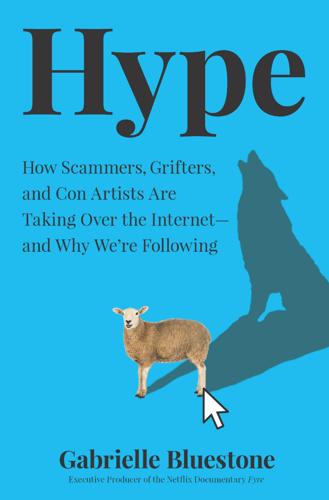
Hype: How Scammers, Grifters, and Con Artists Are Taking Over the Internet―and Why We're Following
by
Gabrielle Bluestone
Published 5 Apr 2021
Because when you really look hard at his legacy, it’s not as impressive as the headlines would have you believe. For one thing, Musk’s SpaceX rockets also keep blowing up on the launchpad, including one model that destroyed a $200 million satellite owned by Facebook in the process. And then there’s his high-tech Hyperloop plan to revolutionize underground travel, an exciting idea on paper that he’s yet to successfully implement in real life. But it has been a great way of marketing his tunnel-boring company. At least I have to presume that’s what led Chicago mayor Rahm Emanuel to sign a deal with Musk in 2018 to create a $1 billion high-speed tunnel system in Chicago.
…
The project was supposed to whisk nineteen hundred people an hour to O’Hare Airport in less than twelve minutes via sealed pods mounted atop electric sleds.61 But just a few months later, Musk announced that instead of pods, he would be using modified Teslas instead, a bait and switch that saw a mass-transit project suddenly transformed into an individual one. With Emanuel now out of office and the proposed transit limited to individual cars, the project now seems unlikely to proceed. And overhyped Boring Company hyperloop plans in Nevada, Virginia, and California have hit similar tunnel walls. But to hear Musk tell it, the projects are all moving lightspeed ahead. It’s “kind of a standard rationalization to make that ‘Yes, I just have this one little problem I have to overcome and once I overcome that, then I’m going to have it.
…
It is us who will blaze the path forward, paved not with algorithms, not with software, but with values. With friendship. With common goals, and most importantly, with humanity,” he said. “A lot of people talk about the third wave, the new revolution. They talk about connectivity. They talk about internet. They talk about Hyperloops to connect cities really quickly, and tunnels so we avoid the traffic. That all sounds amazing. But let me tell you something: I don’t think that’s true.” After waiting for the applause to die out, Adam Neumann, the founder of WeWork, continued his speech. “We will not stand by, and we will not lend our power to presidents, CEOs, ministers, or anybody—any leader—that does not lead us in the right direction, that lies to us, that does not take care of us.

Elon Musk
by
Walter Isaacson
Published 11 Sep 2023
Musk had come up with an even more audacious idea a few years earlier, which was to build a pneumatic-like tube with electromagnetically accelerated pods to propel people at close to supersonic speeds between cities. He called it Hyperloop. In an unusual show of restraint, he thought better of attempting to build one and instead set up a design competition for students. He built a mile-long vacuum-chamber tube alongside SpaceX headquarters for them to demonstrate their ideas. The first Hyperloop student competition was scheduled for a Sunday in January 2017, and student groups from as far away as the Netherlands and Germany were planning to come and show off their experimental pods.
…
The first Hyperloop student competition was scheduled for a Sunday in January 2017, and student groups from as far away as the Netherlands and Germany were planning to come and show off their experimental pods. Mayor Eric Garcetti and other officials would be there, so Musk decided it would be a good opportunity to announce his tunnel-boring idea. At a meeting that Friday morning, he asked how long it would take to begin digging a tunnel in the lot next to the Hyperloop experiment tube. About two weeks, he was told. “Get started today,” he ordered. “I want as big of a hole as we can by Sunday.” His assistant Elissa Butterfield scrambled to get Tesla workers to move their cars out of the lot, and within three hours the two tunneling machines Davis had bought were digging away.
…
No. 12711-VCS, Apr. 27, 2022; Austin Carr, “The Real Story behind Elon Musk’s $2.6 Billion Acquisition of SolarCity,” Fast Company, June 7, 2017; Austin Carr, “Inside Steel Pulse,” Fast Company, June 9, 2017; Josh Dzieza, “Why Tesla’s Battery for Your Home Should Terrify Utilities,” The Verge, Feb. 13. 2015; Ivan Penn and Russ Mitchell, “Elon Musk Wants to Sell People Solar Roofs That Look Great,” Los Angeles Times, Oct. 28, 2016. 43. The Boring Company: Author’s interviews with Sam Teller, Steve Davis, Jon McNeil, Elon Musk, Joe Kuhn, Elissa Butterfield. Elon Musk, “Hyperloop Alpha,” Tesla Blog, 2013; Max Chafkin, “Tunnel Vision,” Bloomberg, Feb. 20, 2017. 44. Rocky Relationships: Author’s interviews with Elon Musk, Juleanna Glover, Sam Teller, Peter Thiel, Amber Heard, Kimbal Musk, Tosca Musk, Maye Musk, Antonio Gracias, Jared Birchall. Joe Kernen, Donald Trump interview, CNBC, Jan. 22, 2020; Barbara Jones, “Inter-galactic Family Feud,” Mail on Sunday, Mar. 17, 2018; Rob Crilly, “Elon Musk’s Estranged Father, 72, Calls His Newborn Baby with Stepdaughter ‘God’s Plan,’ ” The National Post (Canada), Mar. 25, 2018; Strauss, “The Architect of Tomorrow.” 45.
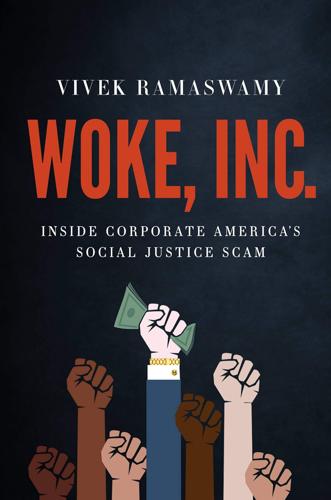
Woke, Inc: Inside Corporate America's Social Justice Scam
by
Vivek Ramaswamy
Published 16 Aug 2021
Fund managers and corporate executives gradually went back to doing business in Saudi Arabia just as they had done before. Richard Branson had rejected the proposed Saudi investment in Virgin Galactic in 2018, but by the next fall his affiliated company Virgin Hyperloop was doing business in Saudi Arabia again. Indeed, in 2019, Virgin Hyperloop’s CEO said it was “delighted” to return to the Future Investment Initiative conference, which Branson had boycotted only a year prior. Uber CEO Dara Khosrowshahi retreated from his initially critical stance in 2018. During a November 2019 interview, he said the murder of Khashoggi was “a mistake” but that Uber had “made mistakes too, with self-driving”—drawing an equivalence between a targeted assassination of a journalist and a pedestrian accident involving a self-driving car.47 McKinsey & Company went back to charging a small fortune for advising clients on how to do business in the Kingdom of Saudi Arabia.

The Mysterious Mr. Nakamoto: A Fifteen-Year Quest to Unmask the Secret Genius Behind Crypto
by
Benjamin Wallace
Published 18 Mar 2025
GO TO NOTE REFERENCE IN TEXT inadvertently betrayed an IP address: BountyHunter, Who Is Satoshi Nakamoto? (blog), chapter 6, “California,” February 20, 2016. GO TO NOTE REFERENCE IN TEXT worst year of his life: Scott Pelley, “Fast Cars and Rocket Ships,” 60 Minutes, March 30, 2014. GO TO NOTE REFERENCE IN TEXT system he called a hyperloop: Elon Musk, “Hyperloop Alpha,” Tesla website, August 12, 2013. GO TO NOTE REFERENCE IN TEXT Pretend Internet Money “untraceable digital currency”: Adrian Chen, “The Underground Website Where You Can Buy Any Drug Imaginable,” Gawker, June 1, 2011. GO TO NOTE REFERENCE IN TEXT a detailed breakdown of how Bitcoin worked: “Bits and Bob,” The Economist, June 13, 2011.
…
And hadn’t Musk shown a prodigious ability to work on several unrelated projects at the same time? He even had a history of releasing a bold product idea in a white paper: in 2013, without fanfare, Musk had published fifty-eight pages online detailing a new kind of transportation system he called a hyperloop. Okay, but Musk had done that under his own name, and he wasn’t humble, so why, if he was Bitcoin’s creator, would he deny being Nakamoto? To Sahil, this was no contradiction; it was further evidence of Musk’s savvy. “Unlike a company that needs marketing, Bitcoin was stronger and could grow faster, in the early days, when it had the aura of an anonymous founder.”
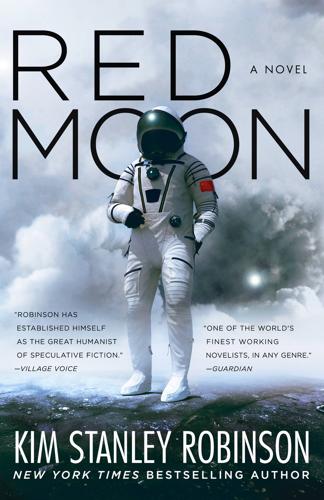
Red Moon
by
Kim Stanley Robinson
Published 22 Oct 2018
“Tell them you’re with me!” she said, and dragged him off. The train station was completely surrounded by other buildings, it seemed to Fred; trains were apparently arriving and departing underground. One new wing on the east end of the giant building displayed posters with pictures that suggested it was a hyperloop terminal. Qi confirmed this and added that they were very fast. She looked at his wristpad and told him his name was William Janney, then marched them to broad doors at the other end of the station, where they stood in the line going through a security checkpoint. Fred worried about the chip she had mentioned, embedded in her body somewhere.
…
From there a big vehicle, with tires taller than a man, came out to the lander and they were helped up and into it. Again Ta Shu felt the wicked press of Earth’s gravity crush him to an invalid. The vehicle jounced to the terminal. There Ta Shu agreed to put on a bodysuit, feeling old and ashamed, even though most of his fellow passengers were doing the same. After the fitting he stalked over to the hyperloop train to Beijing, which was more expensive but slightly faster than flying. Off they went, almost all of them encased in exoskeletons, red-eyed and withdrawn. Back to Earth. In the transfers between stations he focused on learning his suit and avoiding a fall, then sat down thankfully in each new train or tram car.
…
Qi saw the sense in this, and turned and went through the door into the tram. Fred followed, then Ta Shu, and when they were seated and strapped in, the tram jerked forward and off they went. The tram they were on was floating over a piste laid in as straight and flat a line over the landscape as they had been able to build. On Earth they would have been inside hyperloops. Here the moon gave them a near vacuum to move in, but they had to either hew to a straight line or risk flying off the piste. In a couple of places, where the line had to take an unavoidable swerve, the train slowed to a crawl, but most of the time it floated along at a rocketlike speed that nevertheless included no vibration or noise, so that looking out the windows was like looking at an image on a screen.

The Complacent Class: The Self-Defeating Quest for the American Dream
by
Tyler Cowen
Published 27 Feb 2017
Those options seemed like logical next steps for a world that had recently been transformed by railroads, automobiles, urbanization, and many other highly visible shifts in what was built, how we got around, and how things looked. But over the last few decades, the interest in those kinds of transportation-based, landscape-transforming projects largely has faded away. Elon Musk’s hyperloop plans will remain on the drawing board for the foreseeable future, and the settlement of Mars is yet farther away. Urban progress is less transformational and more a matter of making more neighborhoods look and act like the nicer neighborhoods—namely gentrification. When it comes to transportation, mostly we are hoping to avoid greater suffering, such as worse traffic, cuts in bus service, or the rather dramatic declines in service quality experienced in the Washington, DC, Metro system.
…
The Concorde, rather than proving to be the wave of the future, has been retired. Entrepreneur Elon Musk stands as the most visible and obvious representative of the idea of major progress in the physical world. For all of his admirable confidence and unapologetic ambition, most of his projects have yet to succeed. The hyperloop talk seems like more of a publicity stunt than anything else, as we will not be transporting people by whipping them in capsules through reduced-pressure tubes, not anytime soon at least. We can’t even get a new (slow) train tunnel built under the Hudson River to connect New Jersey and New York.

Exponential Organizations: Why New Organizations Are Ten Times Better, Faster, and Cheaper Than Yours (And What to Do About It)
by
Salim Ismail
and
Yuri van Geest
Published 17 Oct 2014
Third, the idea should pass the “toothbrush test” originated by Larry Page: Does the idea solve a real customer problem or use case on a frequent basis? Is it something so useful that a user would go back to it several times a day? It is also possible to leverage a community or crowd to discover breakthrough ideas or new patterns of implementation. Elon Musk set an MTP for transforming transportation with his Hyperloop high-speed transportation idea. At the same time, he opened up the design and implementation of that idea to whoever wanted to take a crack at it. It may seem counterintuitive to delay the breakthrough idea several steps into the process. After all, legend holds that most startups begin with an explosive new idea that’s then applied to a problem space.
…
This is about conviction and passion on the one hand, and radical, unconventional, breakthrough ideas on the other. As Peter Diamandis is fond of saying, “The day before a major breakthrough, it is just a crazy idea.” To illustrate: In a recent conversation with Elon Musk, Salim asked Musk about his Hyperloop concept: “Elon, I have a background in physics and it seems impossible to accelerate humans to 1,000 kilometers an hour and then decelerate them to zero in such a short space of time. Have you thought about that?” Musk’s answer? “Yes, it’s an issue.” To a true entrepreneur, there are no impossibilities, just barriers to overcome.
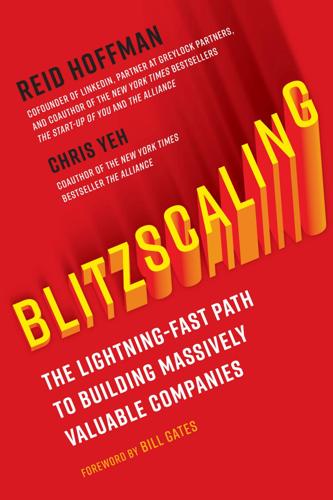
Blitzscaling: The Lightning-Fast Path to Building Massively Valuable Companies
by
Reid Hoffman
and
Chris Yeh
Published 14 Apr 2018
Before, individual waves would sweep through the economy one at a time—technologies like personal computers, disk drives, and CD-ROMs. Today, multiple major waves seem to be arriving simultaneously—technologies like the cloud, AI, AR/VR, not to mention more esoteric projects like supersonic planes and hyperloops. What’s more, rather than being concentrated narrowly in a personal computer industry that was essentially a niche market, today’s new technologies impact nearly every part of the economy, creating many new opportunities. This trend holds tremendous promise. Precision medicine will use computing power to revolutionize health care.
…
Seattle and Los Angeles also offer good quality-of-life benefits to individual professionals, since they are major cultural centers and popular tourist destinations, with less expensive housing markets than Silicon Valley (though hardly inexpensive). These ties will likely get even closer if the cities are connected via additional transportation links like high-speed rail or Elon’s proposed Hyperloop, or with the advent of self-driving cars, all of which would make travel and commuting between these cities and Silicon Valley faster and cheaper. Thus, LA and Seattle are becoming increasingly fertile grounds for entrepreneurship, and good places to set up a company that you are planning on blitzscaling.
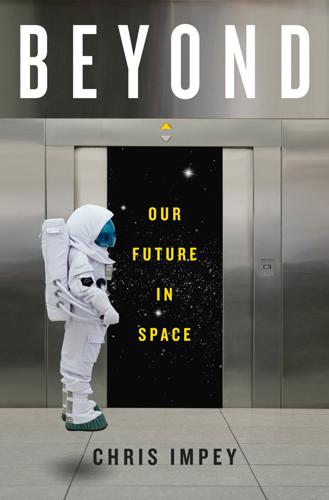
Beyond: Our Future in Space
by
Chris Impey
Published 12 Apr 2015
Musk has a reputation as someone made of cold steel, so it’s not surprising that he’s the inspiration for Robert Downey Jr.’s depiction of Tony Stark in the Iron Man movies, the playboy inventor in a flying, weaponized suit.19 Musk has a lot in common with Richard Branson. Both are billionaires who like to take risks and challenge conventional wisdom. Both have made their mark in multiple transportation industries—Branson in rail, aviation, and space; Musk with electric cars, spacecraft, and his hyperloop aviation concept. They’re both committed philanthropists. But it’s hard to imagine Musk admitting to a debilitating weakness, as Branson did with his shyness, or getting up in drag to pay off a bet, as Branson did when he lost a bet with the boss of Air Asia and served as a stewardess on a charity flight from Perth to Kuala Lumpur in 2013.
…
Frank, 188 behavioral b’s, 15 Bell X-1, 71 Bell, Alexander Graham, 78 Bell Labs, 153 Benford, Gregory, 223–24 Benford, James, 223–24 Bennett, Charles, 230 Bering Strait, land bridge across, 8, 120, 218 Berlin Rocket Society, 32 Berlin Wall, 41 Berners-Lee, Tim, 78–79 Bernoulli, Daniel, 68 Berserker series (Saberhagen), 177, 259 Bezos, Jeff, 103 Bible, 148–49 big bang theory, 131, 255 “Big Ear” telescope, 237 Bigelow, Robert, 102–3 binary stars, 126 biohackers (grinders), 207 biomarkers, 216–18 Biosphere 2 experiment, 192–97, 193, 285–86 black projects, 69–70, 72, 144 Blade Runner, 204, 208, 259 Blue Origin, 103 Boeing X-37, 72, 85 Bohr, Niels, 213, 288 Bostrom, Nick, 207, 245–47, 260–61 Bounty, HMS, 202 Bradbury, Ray, 164 brains: computer interfaces with, 205–7 human, 12–17, 203, 283 of orcas, 190 radiation damage to, 115 simulation of, 259–61 “brain in a vat” concept, 260 Branson, Holly and Sam, 89 Branson, Richard Charles Nicholas, 80, 86–89, 95, 97–98, 101–2, 106 Breakthrough Propulsion Physics, 290 Brezhnev, Leonid, 42 Brightman, Sarah, 102 Brin, Sergey, 275 British Airways, 87 British Interplanetary Society, 221 Brokaw, Tom, 74 Brother Assassin (Saberhagen), 177 Bryan, Richard, 238 buckyballs, 151, 231 Buddhism, 20, 267 Bulletin of the Atomic Scientists, 197 Buran, 72 Burnett, Mark, 75 Burroughs, Edgar Rice, 164 Burrows, William, 35–36 Bush, George W., administration of, 93 Bussard, Robert, 222 butterfly effect, 195 By Rocket into Interplanetary Space (Oberth), 31 California, population dispersion into, 8 California, University of: at Irvine, 112, 223 at Los Angeles, 78 Calvin, William, 15 camera technology, 53, 176–77, 205 Cameron, James, 92, 120, 176 Canada, 142 canals, on Mars, 163 canards, 82–83 cancer, 180 cannonball, Newton’s experiment with, 25, 267 cannons: acceleration force of, 26 smooth-bore, 24 carbon, 172 in nanotechnology, 151–52, 182 as requirement for life, 123–24, 256 carbon dioxide, 132, 171, 172–73, 182, 193–94, 196, 218, 278 carbon nanotubes, 151–52 carbyne, 152 Cassini spacecraft, 52–53, 125, 182 Castro, Fidel, 41 casualties, early Chinese, 22 cataracts, 115 cats, 48–49, 251 causality principle, 230–31 cave paintings, 15 celestial property rights, 145–47 Center for Strategic and International Studies (CSIS), 158 centrifuges, 114 Cerf, Vinton, 67 Chaffee, Roger, 43 Challenger, explosion of, 55–56, 56, 74, 107, 271 Chang’e 3 lunar probe, 143, 162 chemical fuels, 219–21, 220 chickens, research using, 26 chimpanzees, 14 genetic diversity of humans vs., 202 China: as averse to innovation, 109 in early attempts at space travel, 21–22, 22, 68, 139, 141 population dispersion into, 7 revolution in, 141 rocket development in, 23–24, 113 space program of, 139–44, 140, 161, 162, 195, 276 US relations with, 144 Christian, Fletcher, 202 Christianity, 20 Chuansheng Chen, 11 civilization: Type I, 253, 254, 257 Type II, 253–54, 254, 257 Type III, 253, 254, 257 Type IV, 253, 254, 255 Clarke, Arthur C., 149–50, 164, 185, 201, 252 climate change, 197–98, 286 Clinton, Bill, 154 cloning, 251 Clynes, Manfred, 205 Cocconi, Giuseppe, 187 Colbert, Stephen, 74, 117 Cold War, 35–39, 41–43, 50, 55, 73, 76, 139, 145, 197 Columbia, disintegration of, 55, 56, 107 Columbia Accident Investigation Board Report, 107 Columbus, Christopher, 243 comets, 183 Commercial Orbital Transportation Services (COTS), 275 Committee on the Peaceful Uses of Outer Space, 145 communication: with alien species, 52, 189, 234–35, 238, 239, 246, 253, 255, 259 by digital data transmission, 66–67, 77–80 latency and, 178 space technology in, 153–54 Compaq, 95 computation, future technology of, 258–62 confinement, psychological impact of, 169–70 Congress, US: legislation in, 78, 144 on space programs, 38, 41, 75, 156, 158 consciousness, simulation of, 259–61 conservation biology, 201 conspiracy theories, 238, 240 Constellation program, 104 Contact (film), 236–37, 242 Contact (Sagan), 236 contraception, 200 Copernicus, 19, 20, 127 Coriolis force, Coriolis effect, 152 cosmic rays, 115, 160, 160, 164, 167, 168, 204 cosmism, 27 cosmonauts, 141 disasters of, 108 records set by, 115 selection criteria for, 74 Cosmos 1, 184 cosmos, cosmology, ancient concepts of, 17–20 Cosmos Studios, 184 Cosmotheoros (Huygens), 163 counterfactual thinking, 14 Cronkite, Walter, 74 cryogenic suspension, 250–51 cryptobiosis, 123 cryptography, 231, 291 Cuban missile crisis, 41–42 CubeSat, 184–85 Cultural Revolution, Chinese, 141–42 Curiosity rover, 165, 167, 176, 181 cybernetics, 206–7 Cyborg Foundation, 288 cyborgs (cybernetic organisms), 204–8, 288 Cygnus capsule, 100 cytosine, 6 dark energy, 256 d’Arlandes, Marquis, 68 DARPANET, 78 Darwin, Charles, 265 “Darwin” (machine), 227 Death Valley, 118–19 deceleration, 222, 223 DeepSea Challenger sub, 120 deep space, 126–29 Defense Advanced Research Projects Agency (DARPA), 78, 224 Defense Department, US, 38, 78, 90, 153 De Garis, Hugo, 258 Delta rockets, 72, 113 Delta-V, 111 Democritus, 19 Destination Mir (reality show), 75 Diamandis, Peter, 90–94, 97–98, 147, 156 diamonds, 131, 231 Dick, Philip K., 204–5 Digital Equipment Corporation, 213 DNA, 6–7, 9, 19, 189, 202, 228, 251, 263, 265, 266 Do Androids Dream of Electric Sheep (Dick), 205 dogs: brains of, 13 in scientific research, 251 in space travel, 40, 47 Dolly (sheep), 251 Doomsday Clock, 197–98, 246, 286 dopamine, 10, 98 Doppler method, exoplanet detection and characterization by, 127, 128, 129, 130, 133, 215 Doppler shift, 127 Dora-Mittelbau concentration camp, 33 Downey, Robert, Jr., 95 drag, in flight, 68, 83, 223 Drake, Frank, 187–88, 235, 237 Drake equation, 188, 189, 233–35, 237, 241, 243, 244, 253, 291–92 DRD4 alleles, 7R mutation in, 10–12, 11, 15, 98 Drexler, Eric, 226 drones, 180–81 Druyan, Ann, 184 Duke, Charles, 45 Dunn, Tony, 225 Dyson, Freeman, 226–27, 253 Dyson sphere, 253–54, 254 Earth: atmosphere of, 8, 70–71, 70 early impacts on, 50, 172 geological evolution of, 172 as one of many worlds, 17–20 planets similar to, 122, 124–26, 129–33, 224, 235 projected demise of, 197–98 as round, 19 as suited for human habitation, 118–22, 121, 234 as viewed from space, 45, 53, 121, 185, 270 Earth Return Vehicle, 169 “Earthrise” (Anders), 270 Earth similarity index, 215–16 eBay, 79, 95 Economist, The, 105 ecosystem, sealed and self-contained, 192–97, 193, 285 Eiffel Tower, 27, 149 Einstein, Albert, 220, 228, 256 Eisenhower, Dwight D., 36–39, 73, 79 electric cars, 96 electric solar sails, 186 electromagnetic waves, 186 e-mail, 78 embryo transport, 251 Enceladus, 177, 182, 227 potential habitability of, 125, 278 Encyclopædia Britannica, 95, 283 Endangered Species Act (1973), 201 energy: aliens’ use of, 190 civilizations characterized by use of, 252–57, 254, 258 dark, 256 declining growth in world consumption of, 257 Einstein’s equation for, 220 production and efficiency of, 219–24, 220 as requirement for life, 123–24 in rocket equation, 110 Engines of Creation (Drexler), 226 environmental disasters, 245 environmental protection: as applied to space, 147 movement for, 45, 235, 263, 270 Epicureans, 18 Epsilon Eridani, 187 Eratosthenes, 19 ethane, 52, 125 Ethernet, 213 eukaryotes, 172 Euripides, 18 Europa, 52, 97–98 potential habitability of, 125, 125, 161, 278 Europa Clipper mission, 98 Europe: economic depression in, 28 population dispersion into, 7–8, 11, 15 roots of technological development in, 23–24 European Southern Observatory, 133 European Space Agency, 159, 178–79 European Union, bureaucracy of, 106 Eustace, Alan, 120, 272 Evenki people, 119–20 Everest, Mount, 120 evolution: genetic variation in, 6, 203, 265 geological, 172 of human beings, 16–17 off-Earth, 203–4 evolutionary divergence, 201–4 exoplanets: Earth-like, 129–33, 215–18 extreme, 131–32 formation of, 215, 216 incidence and detection of, 126–33, 128, 233 exploration: as basic urge of human nature, 7–12, 109, 218, 261–63 imagination and, 262–63 explorer gene, 86 Explorer I, 38 explosives, early Chinese, 21–23 extinction, 201–2 extraterrestrials, see aliens, extraterrestrial extra-vehicular activities, 179 extremophiles, 122–23 eyeborg, 205–6 Falcon Heavy rocket, 114 Falcon rockets, 96, 97, 101, 184 Federal Aviation Administration (FAA), 82, 93, 105–7, 154 Fédération Aéronautique Internationale, 272 Felix and Félicette (cats), 48–49 Fermi, Enrico, 239–41 Fermilab, 254 “Fermi question,” 240–41, 243 Feynman, Richard, 179–80, 230, 270, 280 F4 Phantom jet fighter, 82 51 Peg (star), 126, 133 55 Cancri (star), 131 F-117 Nighthawk, 69 fine-tuning, 256, 294 fire arrows, 23, 68 fireworks, 21–24, 31 flagella, 180 flight: first human, 68 first powered, 69 principles of, 67–73 stability in, 82–83 “Fly Me to the Moon,” 45 food: energy produced by, 219, 220 in sealed ecosystem, 194–95 for space travel, 115–16, 159, 170 Forward, Robert, 223 Foundation series (Asimov), 94 founder effect, 202–3 Fountains of Paradise, The (Clarke), 149 France, 48, 68, 90 Frankenstein monster, 206, 259 Fresnel lens, 223 From Earth to the Moon (Verne), 183 fuel-to-payload ratio, see rocket equation Fukuyama, Francis, 207 Fuller, Buckminster, 151, 192 fullerenes, 151 Futron corporation, 155 Future of Humanity Institute, 245 “futurology,” 248–52, 249 Fyodorov, Nikolai, 26, 27 Gagarin, Yuri, 40–41, 41, 66, 269 Gaia hypothesis, 286 galaxies: incidence and detection of, 235 number of, 255 see also Milky Way galaxy Galileo, 49–50, 183, 270 Gandhi, Mahatma, 147 Garn, Jake, 114 Garn scale, 114 Garriott, Richard, 92 gas-giant planets, 125, 126–29 Gauss, Karl Friedrich, 238 Gazenko, Oleg, 47 Gemini program, 42 Genesis, Book of, 148–49 genetic anthropology, 6 genetic code, 5–7, 123 genetic diversity, 201–3 genetic drift, 203 genetic engineering, 245, 249 genetic markers, 6–7 genetics, human, 6–7, 9–12, 120, 201–4 Genographic Project, 7, 265 genome sequencing, 93, 202, 292 genotype, 6 “adventure,” 11–12, 98 geocentrism, 17, 19–20, 49 geodesic domes, 192 geological evolution, 172 George III, king of England, 147 German Aerospace Center, 178 Germany, Germans, 202, 238 rocket development by, 28, 30–34, 141 in World War II, 30–35 g-forces, 46–49, 48, 89, 111, 114 GJ 504b (exoplanet), 131 GJ 1214b (exoplanet), 132 glaciation, 172 Glenn Research Center, 219 global communications industry, 153–54 Global Positioning System (GPS), 144, 153–54 God, human beings in special relationship with, 20 Goddard, Robert, 28–32, 29, 36, 76, 78, 81–82, 94, 268 Goddard Space Flight Center, 178 gods, 20 divine intervention of, 18 Golden Fleece awards, 238 Goldilocks zone, 122, 126, 131 Gonzalez, Antonin, 215 Goodall, Jane, 14 Google, 80, 92, 185, 272, 275 Lunar X Prize, 161 Gopnik, Alison, 10, 13 Grasshopper, 101 gravity: centrifugal force in, 26, 114, 150 in flight, 68 of Mars, 181, 203 Newton’s theory of, 25, 267 and orbits, 25, 114–15, 127, 128, 149–50, 267 in rocket equation, 110 of Sun, 183 waves, 255 see also g-forces; zero gravity Gravity, 176 gravity, Earth’s: first object to leave, 40, 51 human beings who left, 45 as obstacle for space travel, 21, 105, 148 as perfect for human beings, 118 simulation of, 168–69 Great Art of Artillery, The (Siemienowicz), 267 Great Britain, 86, 106, 206, 227 “Great Filter,” 244–47 Great Leap Forward, 15–16 “Great Silence, The,” of SETI, 236–39, 240–41, 243–44 Greece, ancient, 17–19, 163 greenhouse effect, 171, 173 greenhouse gasses, 132, 278 Griffin, Michael, 57, 147, 285–86 grinders (biohackers), 207 Grissom, Gus, 43 guanine, 6 Guggenheim, Daniel, 81, 268 Guggenheim, Harry, 81 Guggenheim Foundation, 30, 81–82, 268 gunpowder, 21–24, 267 Guth, Alan, 257 habitable zone, 122, 124–26, 130–31, 132, 188, 241, 246, 277–78, 286, 291 defined, 124 Hadfield, Chris, 142 hair, Aboriginal, 8 “Halfway to Pluto” (Pettit), 273 Hanson, Robin, 247 haptic technology, 178 Harbisson, Neil, 205, 288 Harvard Medical School, 90 Hawking, Stephen, 88, 93, 198, 259 HD 10180 (star), 127 Heinlein, Robert, 177 Heisenberg compensator, 229 Heisenberg’s uncertainty principle, 229–30 heliocentrism, 19 helium, 68 helium 3, 161–62 Herschel, William, 163 Higgs particle, 256 High Frontier, 146–47 Hilton, Paris, 88, 101–2 Hilton hotels, 145 Hinduism, 20 Hiroshima, 222 Hitler, Adolf, 32, 34 Hope, Dennis M., 145, 147 Horowitz, Paul, 237–38 hot Jupiters, 127–28, 130 Hubble Space Telescope, 56–57, 65, 218, 225 Huffington, Arianna, 92 human beings: as adaptable to challenging environments, 118–22 as alien simulations, 260–61, 260 creative spirit of, 73, 248 early global migration of, 5–12, 9, 11, 15, 19, 118, 120, 186, 202, 218, 262, 265 Earth as perfectly suited for, 118–22, 121 exploration intrinsic to nature of, 7–12, 109, 218, 261–63 first appearance of, 5, 15, 172, 234 impact of evolutionary divergence on, 201–4 as isolated species, 241–42 as lone intelligent life, 241, 243 merger of machines and, see cyborgs minimal viable population in, 201–2, 251 off-Earth, 203–4, 215, 250–52 requirements of habitability for, 122, 124–26, 129, 130–31 sense of self of, 232, 261 space as inhospitable to, 53–54, 114–17, 121, 123 space exploration by robots vs., 53–57, 66, 98, 133, 161, 177–79, 179, 208, 224–28 space travel as profound and sublime experience for, 45, 53, 117, 122 speculation on future of, 93, 94, 204, 207–8, 215, 244–47, 248–63, 249 surpassed by technology, 258–59 threats to survival of, 94, 207–8, 244–47, 250, 259–62, 286, 293 timeline for past and future of, 248–50, 249 transforming moment for, 258–59 Huntsville, Ala., US Space and Rocket Center in, 48 Huygens, Christiaan, 163 Huygens probe, 53 hybrid cars, 96 hydrogen, 110, 156, 159, 161, 187, 219, 222 hydrogen bomb, 36 hydrosphere, 173 hyperloop aviation concept, 95 hypothermia, 251 hypothetical scenarios, 15–16 IBM, 213 Icarus Interstellar, 224 ice: on Europa, 125 on Mars, 163–65, 227 on Moon, 159–60 ice ages, 7–8 ice-penetrating robot, 98 IKAROS spacecraft, 184 imagination, 10, 14, 20 exploration and, 261–63 immortality, 259 implants, 206–7 inbreeding, 201–3 India, 159, 161 inflatable modules, 101–2 inflation theory, 255–57, 255 information, processing and storage of, 257–60 infrared telescopes, 190 Inspiration Mars, 170–71 Institute for Advanced Concepts, 280 insurance, for space travel, 106–7 International Academy of Astronautics, 152 International Geophysical Year (1957–1958), 37 International Institute of Air and Space Law, 199 International MicroSpace, 90 International Scientific Lunar Observatory, 157 International Space Station, 55, 64–65, 64, 71, 75, 91, 96, 100, 102, 142, 143, 144, 151, 153, 154, 159, 178–79, 179, 185, 272, 275 living conditions on, 116–17 as staging point, 148 supply runs to, 100–101, 104 International Space University, 90 International Traffic in Arms Regulation (ITAR), 105–6, 144 Internet: Congressional legislation on, 78, 144 development of, 76–77, 77, 94, 95, 271 erroneous predictions about, 213–14 limitations of, 66–67 robotics and, 206 space travel compared to, 76–80, 77, 80 Internet Service Providers (ISPs), 78 interstellar travel, 215–18 energy technology for, 219–24 four approaches to, 251–52 scale model for, 219 Intrepid rovers, 165 Inuit people, 120 Io, 53, 177 property rights on, 145 “iron curtain,” 35 Iron Man, 95 isolation, psychological impact of, 169–70 Jacob’s Ladder, 149 Jade Rabbit (“Yutu”), 139, 143, 161 Japan, 161, 273 Japan Aerospace Exploration Agency (JAXA), 184 Jefferson, Thomas, 224 Jemison, Mae, 224 jet engines, 69–70 Jet Propulsion Laboratory, 141 Johnson, Lyndon, 38, 42, 45, 158, 269 Johnson Space Center, 76, 104, 179, 206, 229, 269 see also Mission Control Jones, Stephanie Tubbs, 74 Joules per kilogram (MJ/kg), 219–20, 222 Journalist in Space program, 74 “junk” DNA, 10, 266 Juno probe, 228 Jupiter, 126, 127, 177, 217, 270 distance from Earth to, 50 moons of, 97, 125, 125 probes to, 51–52, 228 as uninhabitable, 125 Justin (robot), 178 Kaku, Michio, 253 Karash, Yuri, 65 Kardashev, Nikolai, 253 Kardashev scale, 253, 254, 258 Kármán line, 70, 70, 101 Kennedy, John F., 41–43, 45 Kepler, Johannes, 183 Kepler’s law, 127 Kepler spacecraft and telescope, 128, 128, 129–31, 218, 278 Khrushchev, Nikita, 42, 47 Kickstarter, 184 Killian, James, 38 Kline, Nathan, 205 Knight, Pete, 71 Komarov, Vladimir, 43, 108 Korean War, 141 Korolev, Sergei, 35, 37 Kraft, Norbert, 200 Krikalev, Sergei, 115 Kunza language, 119 Kurzweil, Ray, 94, 207, 259 Laika (dog), 47, 65, 269 Laliberté, Guy, 75 landings, challenges of, 51, 84–85, 170 Lang, Fritz, 28, 268 language: of cryptography, 291 emergence of, 15, 16 of Orcas, 190 in reasoning, 13 Lansdorp, Bas, 170–71, 198–99, 282 lasers, 223, 224, 225–26, 239 pulsed, 190, 243 last common ancestor, 6, 123, 265 Late Heavy Bombardment, 172 latency, 178 lava tubes, 160 legislation, on space, 39, 78, 90, 144, 145–47, 198–200 Le Guin, Ursula K., 236–37 Leonov, Alexey, 55 L’Garde Inc., 284 Licancabur volcano, 119 Licklider, Joseph Carl Robnett “Lick,” 76–78 life: appearance and evolution on Earth of, 172 artificial, 258 detection of, 216–18 extension of, 26, 207–8, 250–51, 259 extraterrestrial, see aliens, extraterrestrial intelligent, 190, 235, 241, 243, 258 requirements of habitability for, 122–26, 125, 129, 131–33, 241, 256–57 lifetime factor (L), 234–335 lift, in flight, 68–70, 83 lift-to-drag ratio, 83 light: from binary stars, 126 as biomarker, 217 Doppler shift of, 127 momentum and energy from, 183 speed of, 178, 228–29, 250, 251 waves, 66 Lindbergh, Charles, 30, 81–82, 90–91, 268 “living off the land,” 166, 200 logic, 14, 18 Long March, 141 Long March rockets, 113, 142, 143 Long Now Foundation, 293 Los Alamos, N.
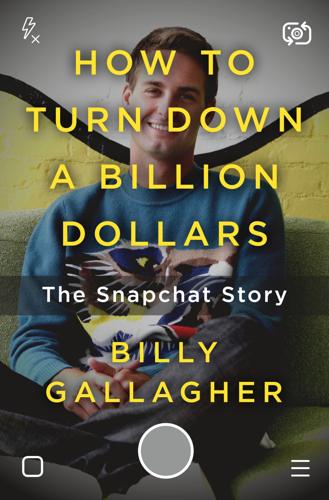
How to Turn Down a Billion Dollars: The Snapchat Story
by
Billy Gallagher
Published 13 Feb 2018
That may not seem like a big difference, but it’s an eternity for a company growing as fast as Snapchat was in 2013 (and Facebook in the 2000s). White had cut her teeth at the much larger and more established Google and Facebook; it was difficult for her to translate those experiences to the rapidly changing Snapchat, which had only fifty employees when she arrived. Once she left Snapchat, White joined the board of directors of Hyperloop Technologies, a startup trying to realize Elon Musk’s vision for a high-speed, tube-based transportation system. White also founded Mave, a high-end personal concierge startup in Santa Monica. White’s departure was made worse by the sheer number of high-level executives who left around the same time.
…
See YesJulz (Julieanna Goddard) Goldroom Goldwyn, Emily Good Luck America (election show) Google app revenue Googleplex IPO Los Angeles office privacy and Snapchat compared with user activity and See also Schmidt, Eric Google AdWords Google Circles Google Glass Google Maps Google Ventures Grande, Greg Green, Diane Greylock Partners group messaging Hamburger, Ellis Hamby, Peter Hastings, Reed Hatmaker, Taylor Hawkins, Billy Hazelbaker, Jill Hewlett-Packard Honan, Mat Hurley, Chad Hwang, Sharon Hwang, Steve Hyland, Sarah Hyperloop Technologies IBM Innovator’s Dilemma, The (Christensen) Instagram Arsenic and demographics of users Facebook purchase of Instagram Stories investors and funding launch of Snapchat compared with Snapcodes and Institutional Venture Partners Intel Interview, The (film) Intuit iOS James, Nicole Jenner, Kylie Jobs, Steve Jordan, David Starr Joss, Bob Jurgenson, Nathan Justin.tv (Justin Kan) Kan, Justin.

Arriving Today: From Factory to Front Door -- Why Everything Has Changed About How and What We Buy
by
Christopher Mims
Published 13 Sep 2021
But, as is the case in most ports in the world, the majority of containers that move into and out of the Port of Los Angeles are carried on the backs of trucks. However they will ultimately leave the port, most containers are carried into the container yard, the place where they idle between being taken off a ship and being put on some sort of intermodal transport, like a train or truck. (The Port of Hamburg is exploring using a Hyperloop, the ultrafast transport system proposed by Elon Musk, as a form of intermodal transport, but such a system would be hugely expensive and take decades to complete.) Not far from where the autostrads picked up their containers, they place them on the concrete a second time. Here, they’re picked up by a different sort of gantry crane, known as an automated stacking crane.
…
C., 159 “essential” workers in pandemic, 90 Estonia, manufacture of Starship robotic delivery systems in, 270 Evergreen, 22 Every Which Way but Loose (film), 109 FAA (Federal Aviation Administration), 264 Facebook, 74, 231 factory system: Amazon fulfillment centers resembling, 170; incorporation of supply chain into, 2, 90–92 Fair Labor Standards Act, 279 Fanuc industrial robot arm, 159–60, 193 Fast Company, 237 Fauci, Anthony, 108, 195 Federal Aviation Administration (FAA), 264 Federal Motor Carrier Safety Administration, 124 Federal Trade Commission (FTC), 168 Federal-Aid Highway Act (1956), 128 FedEx, 107, 155, 244, 245, 252, 253–62, 265, 276, 278, 280 FedEx Ground, 256 Field, Sally, 109 fissured workplaces, 278, 280 5S, 228 Fizyr (robotics company), 246 flag state and flags of convenience, 32 Flaubert, Gustave, 274 Flinn, Craig, 49–55, 57, 61, 64 flywheel, 231 Ford, Henry, Ford Motor Company, and Fordism: Amazon warehouses and robotic warehousing, 163–64, 184; Bezosism and, 198, 207, 214–16, 219, 220, 231; scientific management (Taylorism) compared, 91, 99–101; supply chain in, 2, 8, 12 Forditis, 216 Foxconn (Hon Hai Precision Industry Co.), 17–18, 221 freight brokers and trucking companies, 134–39 Freud, Sigmund, 87 Frontline (PBS documentary series), 201 FTC (Federal Trade Commission), 168 fulfillment center, concept of, 169–70 “fulfillment center alley,” 217, 242, 245 Galetti, Beth, 237 Gallard, Robert, 114–18, 120–21, 125–26, 133, 134, 135 gantry cranes, 78–79 Gantt, Henry, and Gantt chart, 98 Gap, 168 Garcetti, Eric, 72 gemba walks, 227, 229 General Electric, 104, 204, 221–23 General Motors (GM), 8, 154, 177, 247 Generation Z, 235, 266 George, Rose, Ninety Percent of Everything, 113 George Mason University (VA), 263–66, 268 Germany: Autobahn, 130–32; Hamburg, port of, 79 gig economy, 91, 102 Gilbreth, Frank and Lillian, 89–90, 98, 102–4, 185; Cheaper by the Dozen (memoir by Gilbreth children, 1948), 89–90; The Psychology of Management (Lillian Gilbreth), 103 Gladwell, Malcolm, 97 GLONASS, 64 GM (General Motors), 8, 154, 177, 247 Goddard, Robert, 143–44 Google, 142, 153, 184, 204, 231 Google Classroom, 7 Google Maps, 50, 120, 123, 126, 283 Google smartphone, 16 Government Accountability Office, 240 GPS, 37, 59, 64, 118, 120, 143, 145–46, 217, 268 Great Depression, 250, 278 grooming, 83 Gross, Bill, 167 Grubhub, 266 Guendelsberger, Emily, On the Clock, 200, 202–3, 205, 208, 219, 220, 234 Guillet, León, 102 Gutelius, Beth, 233–35 Gyeongsangnam-do, South Korea (shipyard), 26 gyrocompass, electronic, 37, 42 Hagerstown, MD, FedEx sortation center in, 253–61 Hamburg, port of, 79 Hamilton, Tyler, 171–76, 179, 186, 205, 206 harbor pilots, 36–37, 47, 49, 50, 54–55, 58–61, 63, 65 Harper’s Weekly, 103 Hemingway, Ernest, 98 High-Ballin’ (film), 109 high-speed sorter, 190 Hitler, Adolf, 128, 130–31, 144, 145 HMPE (high-modulus polyethylene), 60 Hoffa, Jimmy and James P., 277 Hon Hai Precision Industry Co. (Foxconn), 17–18, 221 Hong Kong, as port, 40, 48 Hou, Xiaodi, 152, 153–54 hub-and-spoke model of delivery, 261–62 Hubei Province, China, 6 Hyperloop, 79 Hyundai Merchant Marine, 26 I Love Lucy (TV show), 191, 213 idle time, 74–76, 137–39, 268 ILWU (International Longshore and Warehouse Union), 69–74 immigrants and immigration, 94, 249 IMO (International Maritime Organization), 28–29 IMUs (inertial measurement units), 143–45, 147, 268 income inequality, 3, 74 Industrial Revolution, 91, 92, 94, 212, 214–15 injury.
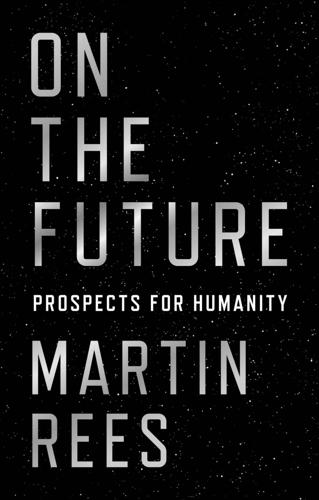
On the Future: Prospects for Humanity
by
Martin J. Rees
Published 14 Oct 2018
But if we had an ‘electronic chauffeur’ who could be trusted for the entire journey, many of us would prefer to travel by car and get door-to-door service. This would reduce demand for long-distance train routes—but at the same time provide an incentive for inventing novel forms of transport, such as intercity hyperloops. Best of all, of course, would be high-grade telecommunications that obviate the need for most nonleisure travel. The digital revolution generates enormous wealth for an elite group of innovators and for global companies, but preserving a healthy society will require redistribution of that wealth.

The Driver in the Driverless Car: How Our Technology Choices Will Create the Future
by
Vivek Wadhwa
and
Alex Salkever
Published 2 Apr 2017
This is part of the genius of Elon Musk as he develops Tesla: that his luxury company is rapidly moving downstream to become a mass-market player. Clearly, though, in the case of the Concorde, the conditions necessary for a futuristic disruption were not in place. They still are not, although some people are trying, including Musk himself, with his Hyperloop transportation project. Another anecdote from London: in 1990, a car service called Addison Lee launched to take a chunk out of the stagnant taxi market. The service allowed users to send an SMS message to call for the cab, and a software-driven, computerized dispatch system ensured that drivers would pick up the fare seeker anywhere in the city within minutes.1 This is, of course, the business model of Uber.
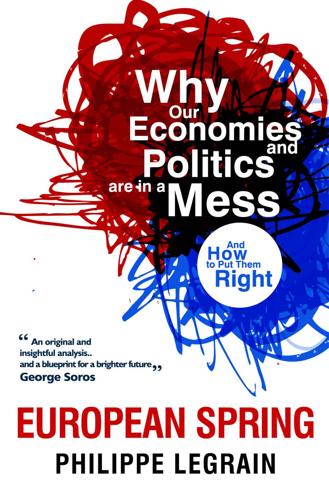
European Spring: Why Our Economies and Politics Are in a Mess - and How to Put Them Right
by
Philippe Legrain
Published 22 Apr 2014
Bypassing banks by creating a credit market for lending to smaller businesses would also help, an idea advocated by Adam Posen, a former member of the Bank of England’s monetary-policy committee and now the president of the Peterson Institute for International Economics, the world’s top think-tank on such matters.439 A new British Investment Bank could finance productive investment – for example, much-needed infrastructure improvements – and provide credit to smaller businesses, as the European Investment Bank does.440 Britain needs better roads, more underpasses and bridges, a high-speed railway network, new Tube (metro) lines and a second Crossrail in London, greater airport capacity in the south-east of England, modernised ports, new power plants, a smart electricity grid, broadband infrastructure, water reservoirs – why not maglev trains and a Hyperloop to boot?441 Unfortunately, the government has so far failed to take advantage of this once-in-a-generation opportunity to borrow cheaply, invest and promote a healthy, investment-led recovery. Instead, it has prompted debt-laden households to start spending again by stoking up yet another housing bubble.
…
We need more people like Elon Musk, a South-African-born entrepreneur. After making billions in the US from PayPal, the online payments system, he didn’t rest on his laurels. He founded Tesla, which makes fantastic (and profitable) electric cars. He set up SpaceX, a space travel company. Now he wants to build a Hyperloop – basically a solar-powered maglev train in a vacuum tube that would whisk passengers along at 760 miles (1,220 kilometres) an hour, three times faster than a high-speed train, and cost ten times less to build.705 Gloomsters argue that technological progress is grinding to a halt. The low-hanging fruit have all been picked, argues Tyler Cowen in The Great Stagnation.706 Nothing can ever compare to the great leap forward ushered in by electricity and other advances during the second wave of the Industrial Revolution between 1870 and 1900, such as cars, running water, petroleum and chemicals, claims Robert Gordon of Northwestern University.707 “Many of the original and spin-off inventions of IR #2 could happen only once – urbanisation, transportation speed, the freedom of females from the drudgery of carrying tons of water per year, and the role of central heating and air conditioning in achieving a year-round constant temperature.”
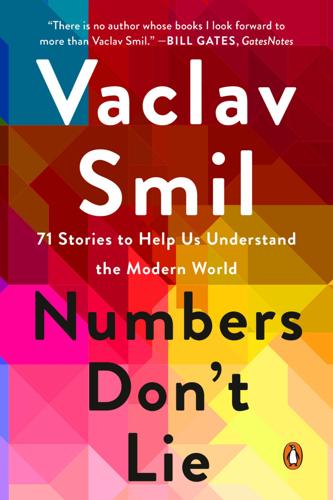
Numbers Don't Lie: 71 Stories to Help Us Understand the Modern World
by
Vaclav Smil
Published 4 May 2021
Human minds have many irrational preferences: we love to speculate about wild and crazy innovations but cannot be bothered to fix common challenges by relying on practical innovation waiting to be implemented. Why do we not improve the boarding of planes rather than delude ourselves with visions of hyperloop trains and eternal life? fuels and electricity Energizing Our Societies Why gas turbines are the best choice In 1939, the world’s first industrial gas turbine began to generate electricity in a municipal power station in Neuchâtel, Switzerland. The machine, installed by Brown Boveri, vented the exhaust without making use of its heat, and the turbine’s compressor consumed nearly three-quarters of the generated power.
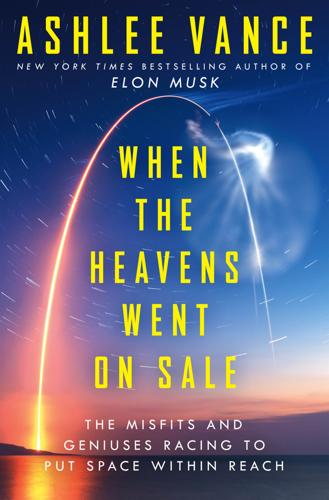
When the Heavens Went on Sale: The Misfits and Geniuses Racing to Put Space Within Reach
by
Ashlee Vance
Published 8 May 2023
Flanagan had grown up in Virginia and earned degrees in mechanical and civil engineering from Montana State University. He’d done some hands-on engineering work after school before landing a job at Firefly Space Systems in Austin. After working there for a year, he went to a start-up that was trying to build a version of Elon Musk’s Hyperloop high-speed transport system. Then he wound up at Astra, too. From time to time, Martin would fall out with Chris Kemp or with the idea of working at Astra and retreat to Texas to spend a few weeks—or sometimes a few months—with his family. That opened up opportunities for Flanagan to take over a lot of the testing and launch infrastructure projects.
…
See Schingler, Jessy Kate (née Cowan-Sharp) Crawford, James, 122 Cube of Learning (Beck; sculpture), 149 CubeSat, 92, 93–94 Cupid, 438 Cyclone-4 rocket, 445 Dangerous Sports Club, 54 DARPA (Defense Advanced Research Projects Agency), 37–39, 116, 195–196, 199, 202, 285, 369–370, 374–375 deep-space exploration, 490 Defense Advanced Research Projects Agency (DARPA), 37–39, 116, 195–196, 199, 202, 285, 369–370, 374–375 Dell, Michael, 410n Delphin engine, 370 Delta Clipper, 47 differential drag, 32, 109 DirectTV, 443n DISCOVERER, 116 diversity, lack of, 287, 288 D’Mello, Shaun, 215, 219, 231 Dnipropetrovsk (Dnipro), 438–443, 444, 447–448, 450 Dotcom, Kim, 138 Doves (satellites), 27, 31–32, 96, 103–106, 109–110, 227, 396 Dragon capsule, 327 EchoStar, 443n Edwards Air Force Base, 173, 412 Electron rocket concept for, 139, 209 construction of, 140–141 first launch and, 226–227 flight frequency of, 16 kick stage for, 230–231 launch challenges and, 214–218, 220–221 Markusic and, 424 Planet Labs and, 107 reusability and, 490 schedule and, 224 second launch and, 227–228 size comparison of, 395 success of, 337–338, 365, 369 third launch of, 238–241 work on, 209–213 Elizabeth II, Queen, 84 Energia rocket, 437 English, Christa, 410, 411, 417, 419, 424, 465 EOS Data Analytics, 433 Escapia, 59, 273 European Space Agency, 83 Eveleth, Decker, 112–115, 119 expected casualty analysis, 345 Expedia, 273 FAA, 330–331, 332, 336, 343, 345 Falcon 1, 2–13, 16, 20, 38, 40, 56, 188, 208, 397, 415, 419, 426 Falcon 9, 12, 141, 395, 428, 490 Farrant, Ben, 289–290, 370, 391 Fay, Michael, 190–192, 193, 203, 216–217 Federal Communications Commission, 131 Ferraro, Matthew, 101 Firefly Aerospace Astra and, 493 delays and, 466–467 first launch and, 479 founding of, 404–405 funding and, 455, 464–465, 470–471, 475 goals of, 402, 403–404 increase rocket size and, 455 launch license denial and, 472, 485 Polyakov and, 434–436, 457–458 Polyakov’s ouster and, 484–486 setbacks for, 458–459 SpaceX and, 403 success of, 486 in Ukraine, 448–450 value of, 476 Firefly Farm, 466 Firefly Space Systems advantages for, 208 bankruptcy of, 429, 433–434 founding of, 423–427 funding and, 428–430 goals of, 207, 427 launch vehicles of, 395 Martin and, 356 Polyakov and, 433–434 Rocket Lab and, 214, 230 US government agreement and, 456 Vandenberg Air Force Base and, 460–464 Fisher & Paykel, 154–157, 159, 161, 163, 165 Five Eyes intelligence-sharing group, 222 Flanagan, Matthew, 339, 356–362, 391 Fleet Space Technologies, 238–239 Fleming, Shane, 218 flight termination systems, 225, 227, 286, 344–345 Flirt, 438 4D, 274–275, 489 FuckedCompany.com, 274 Gamma, 426 Garcia, Ian, 290, 329 Garver, Lori, 67 Gates, Bill, 387, 388 Gemini mission, 42 Gentile, Bryson, 311–314, 317, 379 geolocation data, 125–126 Gies, Bill, 287–288, 338–340, 391 Gillies, Daniel, 234n Gillmore, Chester, 108 Goddard, Robert, 145 Google Ames Research Center and, 58, 61, 64–65 Google Earth, 120 Google Maps, 120 Google Mars, 64, 276 Google Moon, 64–65, 276 PhoneSat project and, 93 Skybox Imaging and, 111n Gorbachev, Mikhail, 47n GPS chips, 303 Grassley, Chuck, 68 Great Mercury Island, 190–191, 202–203 Griffin, Michael, 43, 54, 59 Guiana Space Center, 397 hacker houses, 73 Halley’s Comet, 153–154 Hawking, Stephen, 86 HitDynamics, 438 Hofmann, Chris, 338–339, 346, 350, 379, 382, 391 Holicity, 387 HomeAway, 273 Hopkins, Anthony, 148 Houghton, Samuel, 199–201 Howard, Ben, 101, 103, 106, 488 Hubble Space Telescope, 43 Humanity Star, 227–228 Hundley, Lucas, 281–282 Hydra, 447 hydrogen peroxide, 159–161 Hyperloop, 356 ICBM factory in Dnipro, 440, 444 image analysts, 118–119 imaging satellites, 98–99 India Pakistan and, 123–124 space program in, 27–28 Indian Space Research Organisation (ISRO), 27, 29–30 Industrial Research Limited (IRL), 169–171, 179, 181, 184 Industrial Revolution, 145 Ingels, Bjarke, 312 Instant Eyes project, 195–196, 199–201 International Astronautical Congress, 49, 86 International Space Station (ISS), 13, 105, 107, 436 International Space University, 66, 86–87 International Talk like a Pirate Day, 79 International Traffic in Arms Regulations (ITAR), 66, 233–234 internet service, satellites and, 14, 18, 128–130, 487–488 Intimidator 5, 91 ion thrusters, 450 Iridium, 129, 388 Israel Defense Forces, 119 ITAR (International Traffic in Arms Regulations), 66 jade, 149 James, Deborah Lee, 475 James Webb Space Telescope, 327 Jazayeri, Mike, 365n Jet Propulsion Laboratory (JPL), 43, 85, 174–175 Jobs, Steve, 63 Jornales, Rose, 286–287, 391 Joyce, Steven, 221, 223 Judson, Mike, 290–291, 307, 317, 318, 324 Jurvetson, Steve, 91, 102, 104n, 105, 488 Keeter, Milton, 330–331, 332, 338–340, 343–346, 391 Kelly, Isaac, 326, 338–342, 391 Kemp, Chris Ames Research Center and, 59–61, 276 Astra going public and, 385, 387–388, 390–391 Beck and, 365–366 Brockert and, 292 budget issues and, 326 Burning Man and, 253–254 company name and, 294–295 “Dawn of Space” party and, 295–296 engine tests and, 282–283, 307 financial issues and, 370–372, 374, 378, 381–382 funding and, 296–297, 365, 366, 383 goals of, 309–310, 384 Google and, 64–65 on himself, 267–277 Jessy Kate and, 324–325 Judson and, 291n launch attempts and, 316, 361, 376, 380, 382–383, 393 launch delays and, 334 launch failures and, 336, 337, 347, 349, 350–354, 364 launch locations and, 280, 304 launch preparations and, 331–333 life advice from, 308 living arrangements of, 102n loss of driver’s license and, 297–299 Lyon and, 390 Marshall and, 85 Martin and, 356, 357–358 media attention and, 317 moving rocket and, 305, 306 Open Lunar Foundation and, 488 OpenStack and, 250–253 Polyakov and, 468–469 Rainbow Mansion and, 72–73 recent work of, 489, 492–493 Rocket Lab and, 338 security and, 301 simplicity of design and, 279 Skyhawk space and, 310–314, 367–369 status meetings and, 281 Stealth Space Company and, 260–263, 265 Thompson and, 348–349 transparency of, 394 Ventions LLC and, 250, 257–258 Whitesides and, 423 Kennedy, Fred, 13, 37–38 Kennedy Space Center, 174 Kessler syndrome, 131 Key, John, 220, 221, 222, 223 Khosla Ventures, 206–207, 209, 214 Khrushchev, Nikita, 440 King, P.

Breaking Twitter: Elon Musk and the Most Controversial Corporate Takeover in History
by
Ben Mezrich
Published 6 Nov 2023
She was up on the ninth floor, in one of the tiny, glass-walled conference rooms that circled the open workspace. This time the text had come from one of Elon’s “inner circle”—a woman named Jehn Balajadia. Jehn was the COO of Elon’s underground drilling business, the Boring Company, which had originally been pitched as the future of transportation, promising a network of underground Hyperloop tunnels spiriting electric cars up to a hundred and fifty miles per hour beneath crowded urban hot spots like Los Angeles, Chicago, and Baltimore. So far, the Boring Company’s greatest successes were a 1.7-mile long loop connecting the Las Vegas Convention Center with itself, populated by Tesla Model 3s moving at an underwhelming 30 mph; a mail-order personal-use flamethrower; and a fragrance called “Burnt Hair” that provided men and women with an olfactory experience “just like leaning over a candle at the dinner table, but without all the hard work.”
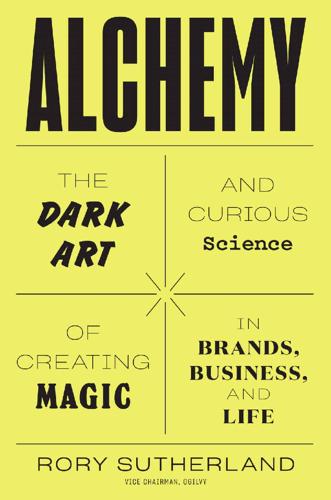
Alchemy: The Dark Art and Curious Science of Creating Magic in Brands, Business, and Life
by
Rory Sutherland
Published 6 May 2019
The argument for X is that the major advances in human civilisation have come from things that, rather than resulting in modest improvement, were game-changers – steam power versus horse power, train versus canal, electricity versus gaslight. I hope X is successful but think that their engineers will find it difficult. We are now, in many cases, competing with the laws of physics. The scramjet or the hyperloop* might be potential moonshots, but making land- or air-travel-speeds so much faster is a really hard problem – and comes with unforeseen dangers.* By contrast, I think ‘psychological moonshots’ are comparatively easy. Making a train journey 20 per cent faster might cost hundreds of millions, but making it 20 per cent more enjoyable may cost almost nothing.
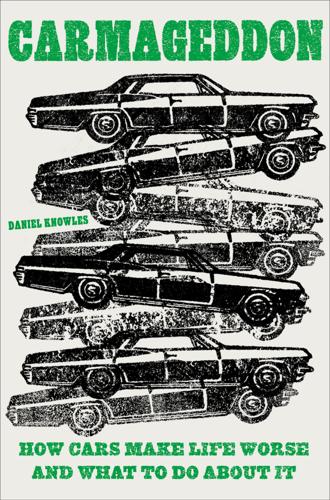
Carmageddon: How Cars Make Life Worse and What to Do About It
by
Daniel Knowles
Published 27 Mar 2023
It is amazing to think that for decades, cars, not people, had priority on the banks of the Seine. I went to Paris to get a sense of somewhere that is managing to break the mold on car dependency. Because what Paris shows is that you can change transport a lot by introducing technology. Not, however, fancy new technology like self-driving cars or hyperloops. Actually the technology that Paris is using to transform itself is rather old: the humble bicycle. The key benefit of closing roads to cars in Paris has come from the fact that they are reopened to people on bikes. And that has the power to radically transform cities for the better. When the roads closed, many feared that the result would be backed up traffic elsewhere in the city.

Streetfight: Handbook for an Urban Revolution
by
Janette Sadik-Khan
Published 8 Mar 2016
Certainly no people walking or biking. And fast, reliable, or demand-based buses would truly be science fiction or a doomed ride, like Keanu Reeves in Speed. A dazzling transit dream for many cities still conjures images of a modern, driverless metro, high-speed monorails, and maybe high-speed rail or hyperloop connecting major cities. In The Simpsons, a shyster sells the residents of Springfield on a monorail system before absconding with the city’s money. What is it about monorails that prompts people to bring them up in community meetings as potential panaceas for transportation problems? Monorails are what we thought the future would be like at the 1964 World’s Fair.
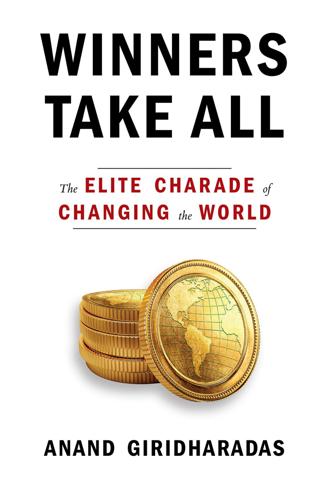
Winners Take All: The Elite Charade of Changing the World
by
Anand Giridharadas
Published 27 Aug 2018
And the entrepreneurs at Summit at Sea knew that a VC like Pishevar, whose firm was called Sherpa Ventures, was in a position, should he so choose, to guide any of them to the mountaintop. This knowledge helped explain the crush of bodies that had come to see Pishevar’s talk, titled “All Aboard the Hyperloop: Supersonic Storytelling with VC Shervin Pishevar.” People were curled up on armchairs and sofas; some sat and others lay down on the ground; still others hovered above, ringed a few deep around a balcony on the eighth floor, peering down. The crowd was listening in rapt, reverent silence. What they heard was a powerful man who seemed at pains to explain his power away and to cast himself as a man in pursuit of things nobler than money.

Falter: Has the Human Game Begun to Play Itself Out?
by
Bill McKibben
Published 15 Apr 2019
Vanity Fair, in 2016, declared that Ayn Rand was “perhaps the most influential figure in the tech industry.” Steve Wozniak (cofounder of Apple) said that Steve Jobs (deity) considered Atlas Shrugged one of his guides in life.3 Elon Musk (also a deity, and straight out of a Rand novel, with his rockets and hyperloops and wild cars) says Rand “has a fairly extreme set of views, but she has some good points in there.”4 That’s as faint as the praise gets. Travis Kalanick, who founded Uber, used the cover of The Fountainhead as his Twitter avatar. Peter Thiel, a cofounder of PayPal and an early investor in Facebook, once launched a mission to develop a floating city, a “sea-stead” that would be a politically autonomous city-state where national governments would have no sway.5 Some of Silicon Valley’s antigovernment sentiment is old, or at least as old as anything can be in Silicon Valley.

British Rail
by
Christian Wolmar
Published 9 Jun 2022
They airily dismissed any doubts about the ability of tunnels to accommodate road traffic, suggesting that coaches, in particular, would be able to speed along these dedicated highways. Much as today’s media laps up outlandish notions of congestion-busting and safety-enhancing new forms of transport, such as driverless cars, delivery by drone and hyperloops, coverage of the Conversion League was remarkably uncritical. A failure to ask searching questions of its promoters resulted in the concept being picked up by a handful of serious and influential players. In particular, Peter Hall, a media-savvy professor of geography at Reading University, who later became a nationally respected authority on planning, expressed support for the concept.

The Stack: On Software and Sovereignty
by
Benjamin H. Bratton
Published 19 Feb 2016
Interview with Joan Didion in Shotgun Freeway: Drives through Lost L.A., directed by Morgan Neville and Harry Pallenberg (King Pictures, 1995). 50. Reyner Banham Loves Los Angeles, directed by Reyner Banham (1972). 51. Benjamin H. Bratton, “iPhone City (v.2008),” in Digital Cities AD: Architectural Design 79, no. 4 (2009): 90–97. 52. Elon Musk and SpaceX, “Hyperloop Alpha,” August 12, 2013, http://www.spacex.com/sites/spacex/files/hyperloop_alpha-20130812.pdf. 53. Vicky Validakis, “Rio's Driverless Trucks Move 100 Million Tonnes,” Australian Mining, April 24, 2013, http://www.miningaustralia.com.au/news/rio-s-driverless-trucks-move-100-million-tonnes. 54. Bruno Latour, Aramis, or the Love of Technology (Cambridge, MA: Harvard University Press, 1993). 55.

Choked: Life and Breath in the Age of Air Pollution
by
Beth Gardiner
Published 18 Apr 2019
One observer, recalling an investor’s description of Silicon Valley as “a lot of big minds chasing small ideas,” said that for all his flaws, Musk’s “mind and ideas are big ones.”33 A provocateur who is often too eager to pick fights, he is an imperfect messenger for the new industries he champions. And some of his ideas sound outlandish—a colony on Mars; high-speed travel through underground “hyperloops.” But he’s made more progress than many expected toward achieving some of them. SolarCity is his bid to expand clean power use, Powerwall his push for the batteries that make renewables reliable. With Tesla, he wants to remake transportation, and he bet—correctly—that he could beat a vast but moribund industry to it.
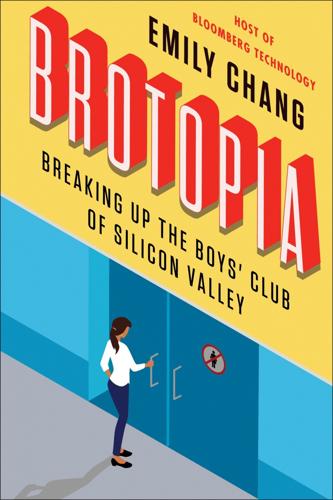
Brotopia: Breaking Up the Boys' Club of Silicon Valley
by
Emily Chang
Published 6 Feb 2018
A person with firsthand knowledge of Pishevar’s behavior toward Geidt confirmed the holiday party account. Though Geidt declined to comment when the story broke, it’s clear Pishevar was in a position of power. He had recently co-founded his own venture fund, Sherpa Capital, and the futuristic tube transportation company Hyperloop One. Pishevar, through his lawyer, denied the allegation and told Bloomberg that he and Geidt always maintained a “friendly, professional relationship.” His representatives also directed us to speak with someone else who had attended the party, and asked not to be named, who claimed that Pishevar couldn’t have touched anyone that night because he had a drink in one hand and the pony leash in the other.
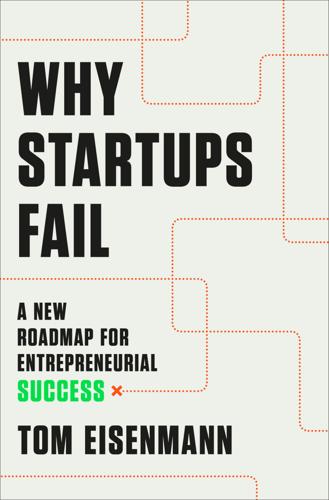
Why Startups Fail: A New Roadmap for Entrepreneurial Success
by
Tom Eisenmann
Published 29 Mar 2021
Federal Express did; when Fred Smith founded the company in the early 1970s, it was the biggest venture capital bet in history. More recently, we have Elon Musk’s Tesla and SpaceX, both of which have soaring valuations as I write this. So, expect more moonshots; indeed, we need them to address grand societal challenges like climate change. Visionary entrepreneurs around the world are working on hyperloops, autonomous vehicles, gene editing, and quantum computing. One day, you’ll surely be able to chat with Jibo’s grandchildren. We may even get flying cars. CHAPTER 10 Running on Empty Failure is not the worst thing; the worst thing is working on something for years with no end in sight.

Cities in the Sky: The Quest to Build the World's Tallest Skyscrapers
by
Jason M. Barr
Published 13 May 2024
The most jaw-dropping project is called The Line, a titanic structure that will be 1,600 feet (500 m) tall, 660 feet (200 m) wide, and 110 miles (170 km) long, making this futuristic structure a horizontal skyscraper that aims to be both a building and a city under one roof. A within-building rail line or hyperloop will allow people to get from one end to the other in twenty minutes. At an expected price of $1 trillion, it is planned to house at least 9 million residents, similar to the population of New York City. Expressed in another way, The Line, if fully constructed, would be the equivalent of 9,000 Taipei 101s.
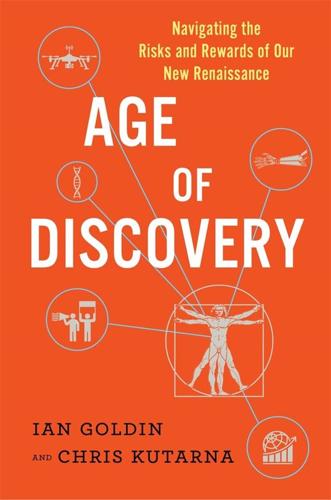
Age of Discovery: Navigating the Risks and Rewards of Our New Renaissance
by
Ian Goldin
and
Chris Kutarna
Published 23 May 2016
Companies and entrepreneurs that are showing the way include: IBM, which in 2014 announced a five-year plan to bet 10 percent of its net income on post-silicon computer chips;30 Google (Alphabet), whose recent long-term bets include a new quantum artificial intelligence lab, self-driving cars and research into anti-aging drugs;31 and Elon Musk, a co-founder of PayPal whose moon shots include SpaceX (a space transport firm whose eventual goal is to colonize Mars) and Tesla (whose diverse aims include the mass-market adoption of electric cars, household battery packs to store renewable energy, and a 600-mile-per-hour hyperloop to transport people between Los Angeles and San Francisco). Dare citizens to fail Academic researchers and think tanks debate endlessly how to make public taxes, laws and regulations better. In truth, there is no one right answer. This is a values question as much as an empirical one, and around the world the policy response should draw on the values citizens cherish as well as the evidence.

Human Frontiers: The Future of Big Ideas in an Age of Small Thinking
by
Michael Bhaskar
Published 2 Nov 2021
Storrs Hall points out, if Henry Ford had been sued every time someone crashed their Model T, we likely wouldn't have cars and highways at all.101 New forms of transport or medicine bump up against tight economic and policy limits. Concorde ceased flying not just over safety fears, but because it made a loss. It's possible to build hyperloop trains, hypersonic aircraft or lunar-orbiting bases, or send a mission to Mars, but the delicate balance of risk, regulation and return on investment may make them infeasible. Financiers won't fund new services for which they believe there will be a lack of demand, or that are likely to hit regulatory headwinds, and because the engineering is so challenging, two brothers in a workshop can't help us this time.
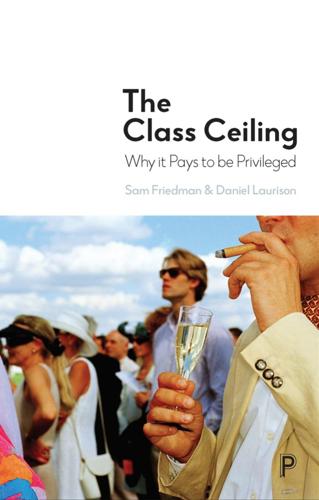
The Class Ceiling: Why It Pays to Be Privileged
by
Sam Friedman
and
Daniel Laurison
Published 28 Jan 2019
The currency of deep technical skills, or what we would call technical capital,32 was most clearly revealed in the narratives of early-career staff. Elena spoke enthusiastically about her plans to develop a particular “scripting tool” to aid with “complex geometrical modelling”, while Martin explained his aspiration to become an expert in “hyperloop transportation”. Both explained that partners were actively encouraging them to develop these kinds of technical expertise, to find their ‘niche’ or master a ‘specialist area’. Similarly, when explaining who he looked up to, and why, Connor, an Architectural Assistant from intermediate origins, foregrounded technical expertise: Sometimes I’m working on a project with some of the [Partners] upstairs and you just stand back and you’re like, “Wow!”
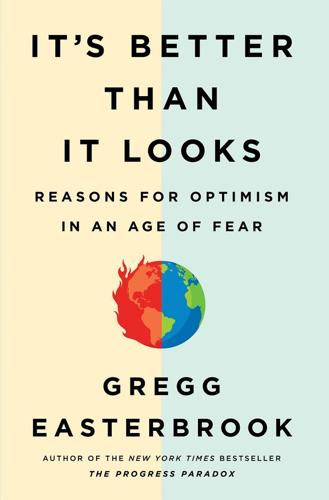
It's Better Than It Looks: Reasons for Optimism in an Age of Fear
by
Gregg Easterbrook
Published 20 Feb 2018
Whether on foot or horseback, in carriages, streetcars, or personal cars, for seventy minutes a day we roam. “This is some deep optimization caused by hundreds of thousands of years of evolution, a daily inspection of our nearby territory,” Ausubel says. As means of travel become more rapid—autonomous jets, maglev trains, perhaps the extremely fast “hyperloop”-style subway—people will continue to roam for seventy minutes a day, while increasing their range. “In Europe since 1950, the tripling of the average speed of travel has extended personal area tenfold,” he said. “This is going to happen for the whole world, and will be safe.” THE SUMMATION OF WHY TECHNOLOGY grows safer instead of more dangerous turns on a combination of liberal ideology (regulation), conservative ideology (market forces), military needs (precision guidance replacing huge explosions), and manufacturing pragmatics (reducing resource and fuel use makes products more valuable).

AI 2041: Ten Visions for Our Future
by
Kai-Fu Lee
and
Qiufan Chen
Published 13 Sep 2021
But during my more than ten years working in tech, I encountered many engineers and technologists who were not-so-secret fans of speculative fiction. This enthusiasm sometimes manifested in meeting rooms with names like “Enterprise” or “Neuromancer,” but it also was present among the formidable minds behind projects like Google X and Hyperloop. From the modern submarine to the laser gun, and from mobile phones to CRISPR, scientists will readily admit they got direct inspirations from fiction. Imagination indeed shapes the world. From the beginning, I decided that AI 2041 would challenge the stereotype of the dystopian AI narrative—the kind of tale where the future is irrevocably bleak.

Connectography: Mapping the Future of Global Civilization
by
Parag Khanna
Published 18 Apr 2016
.-101 that is home to over six thousand technology companies that generate more than $200 billion in GDP. (With a San Francisco–Los Angeles–San Diego high-speed rail, California’s Pacific Coast would truly become the western counterpart to the northeastern corridor. Elon Musk’s Tesla has proposed an ultra-high-speed “Hyperloop” tunnel system for this route.) And the Dallas–Fort Worth Metroplex, the largest urban cluster in the American South, houses industry giants such as Exxon, AT&T, and American Airlines in an economy larger than South Africa’s and is actually building a high-speed rail (well, only 120 kilometers per hour) called the Trans-Texas Corridor that could eventually extend to the oil capital Houston based on plans rolled out in 2014 by Texas Central Railway and the bullet-train operator Central Japan Railway.
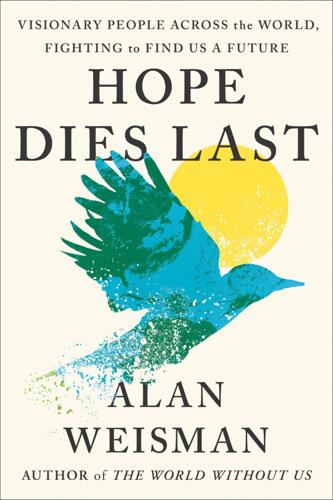
Hope Dies Last: Visionary People Across the World, Fighting to Find Us a Future
by
Alan Weisman
Published 21 Apr 2025
(“Sorry,” Bren told them, “no seaweed underneath your city. It needs sunlight to photosynthesize.”) In 2021, BIG’s scale model of Oceanix City was displayed in the Smithsonian’s Futures exhibition as an example of how blockbuster technology could radically change the world. Other examples included flying taxis, DNA designer babies, hyperloop trains approaching the speed of sound, a solar-powered water harvester to pull vapor from desert air, and a biodegradable, tree-sprouting funeral urn. It was nice to be included, but with the Abu Dhabi deal languishing, it also was frustrating to merely be a futuristic museum exhibit while climate news reminded them daily that the need was now, in the present.

WTF?: What's the Future and Why It's Up to Us
by
Tim O'Reilly
Published 9 Oct 2017
The convergence of new design approaches, new materials, and new kinds of manufacturing will ultimately allow for the creation of new products as astonishing as the Eiffel Tower was to the world of 1889. Might we one day be able to build the fabled space elevator of science fiction, or Elon Musk’s Hyperloop transportation system? The fusion of human with the latest technology doesn’t stop there. Already there are people trying to embed new senses—and make no mistake of it, GPS is already an addition to the human sensorium, albeit still in an external device—directly into our minds and bodies. Might we one day be able to fill the blood with nanobots—tiny machines—that repair our cells, relegating the organ and hip replacements of today, marvelous as they are, to a museum of antiquated technology?

A Generation of Sociopaths: How the Baby Boomers Betrayed America
by
Bruce Cannon Gibney
Published 7 Mar 2017
Bridges and waterworks take years to complete and often decades to return investments. What little interest the Boomers had in infrastructure therefore dwindles with age, especially if such investments risk the entitlements budget. As long as Boomers control government, there will be no smart grid, no public hyperloop, no wholesale move to clean power, not even appropriate maintenance. The Selfless and Selfish Cases for Public Goods The argument for infrastructure reduces to two facts: (1) we need it, and (2) it generates a significant and positive return on investment. That we require roads and sewers demands no further comment.

The Power Law: Venture Capital and the Making of the New Future
by
Sebastian Mallaby
Published 1 Feb 2022
On the other hand, video games and social media promote screen addiction and fake news, even as they entertain, inform, and allow Grandma to admire pictures of her distant grandchildren. The gap between VC rhetoric and VC practice is easily mocked. In April 2020, in the throes of the coronavirus pandemic, the venture capitalist Marc Andreessen proclaimed that it was “time to build.” “Where are the high-speed trains, the soaring monorails, the hyperloops, and yes, the flying cars?” he demanded.[37] The following month Andreessen’s partnership invested in Clubhouse, an invitation-only social-media app. Meanwhile, the venture industry’s expansive pronouncements stand in contrast to the narrowness of its monoculture. Women are badly underrepresented: as of 2020, they account for 16 percent of investing partners.

Growth: From Microorganisms to Megacities
by
Vaclav Smil
Published 23 Sep 2019
The opposite is true, as the average speed of urban traffic has declined in almost every major city since the 1960s, and just its doubling would be impossible even if every vehicle was part of a synchronized, automated urban system (unless all crossroads were eliminated, infrastructurally an impossible transformation in existing cities). The average speed of rapid trains has increased only marginally since their first deployment in 1964 and, once again, it is a very safe bet that billions of people traveling by train will not do so in a decade or two in a supersonic hyperloop fashion. The typical speed of large container ships (30–40 km/h) is not radically higher than the typical speed of the 19th-century clippers; of course, their cargo capacities are orders of magnitude apart, but there has been no hyperbolic growth of speeds in ocean shipping, and there is no realistic prospect that this fundamental mode of transport that enabled modern economic globalization will enter a new age of radically increased speeds.